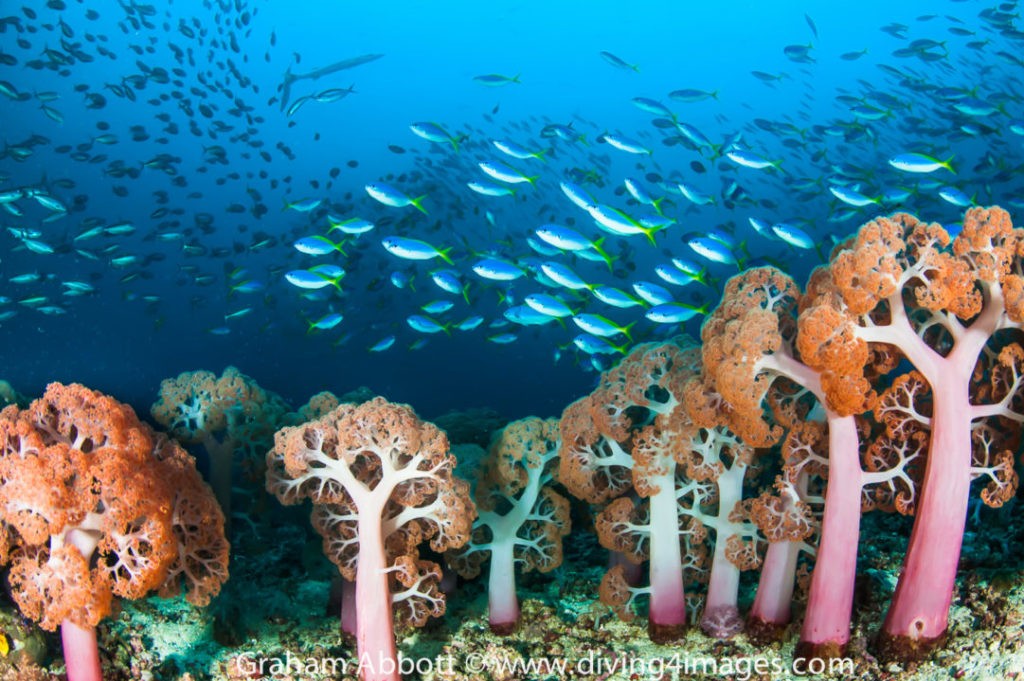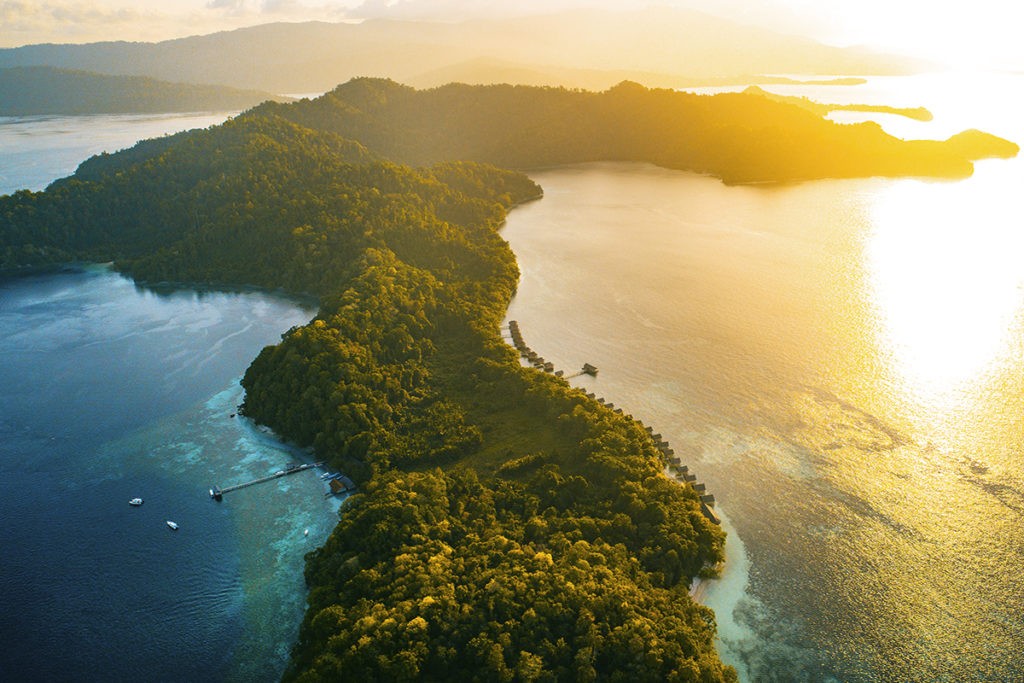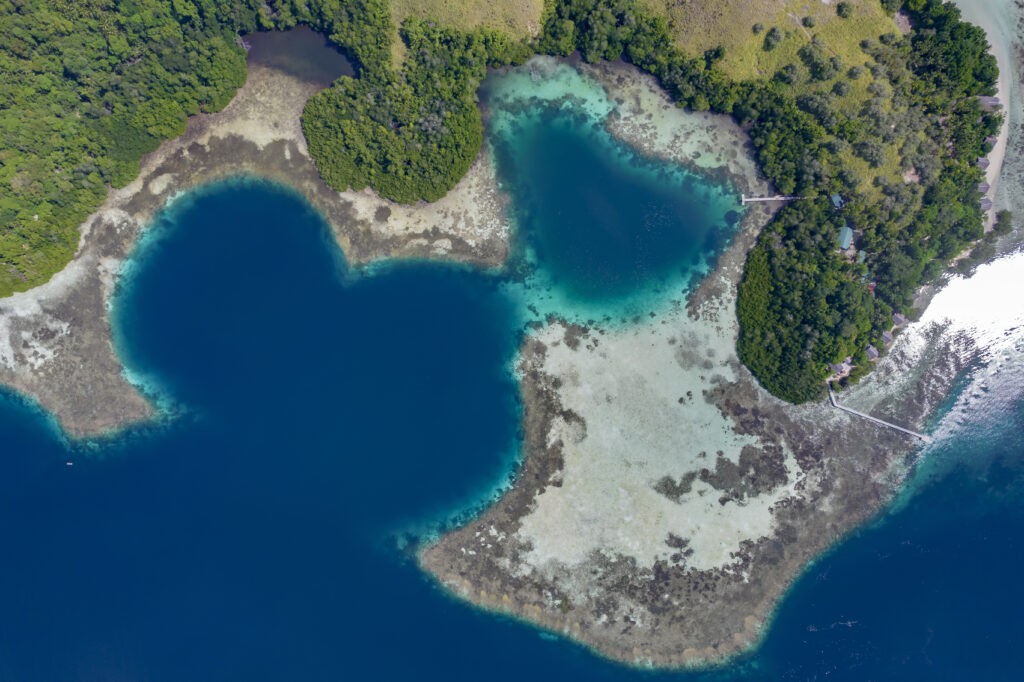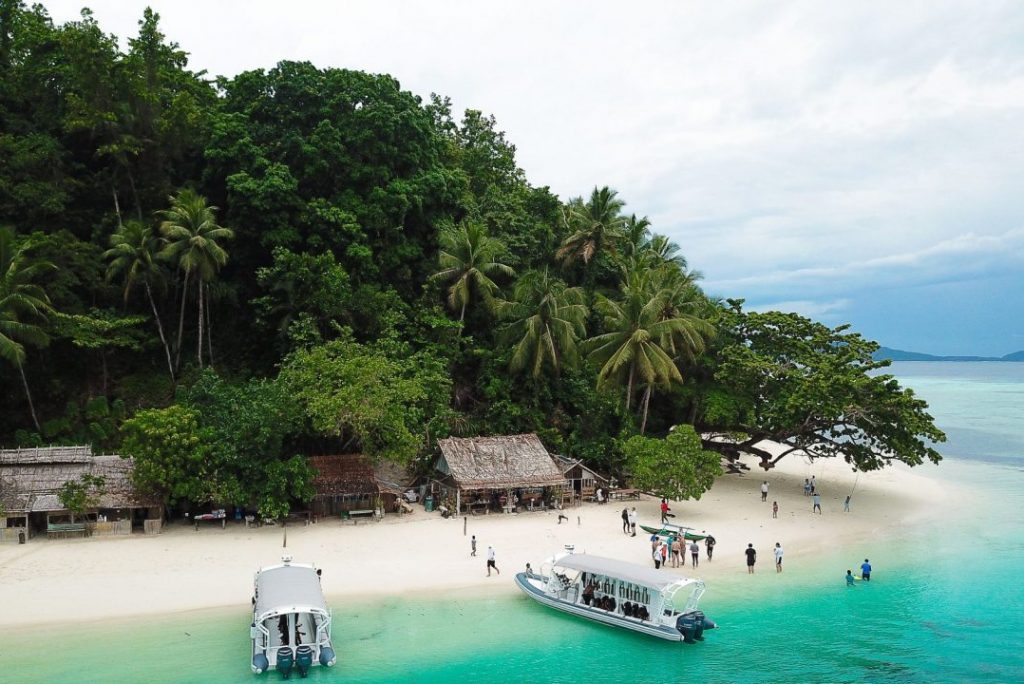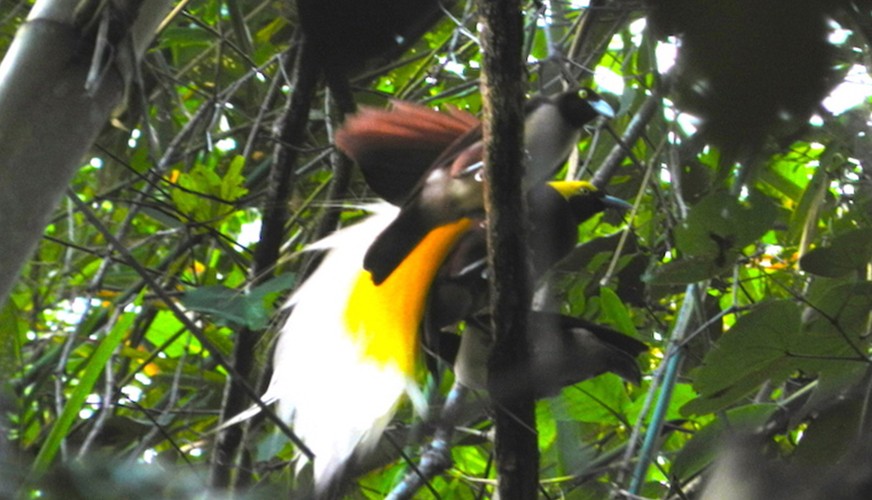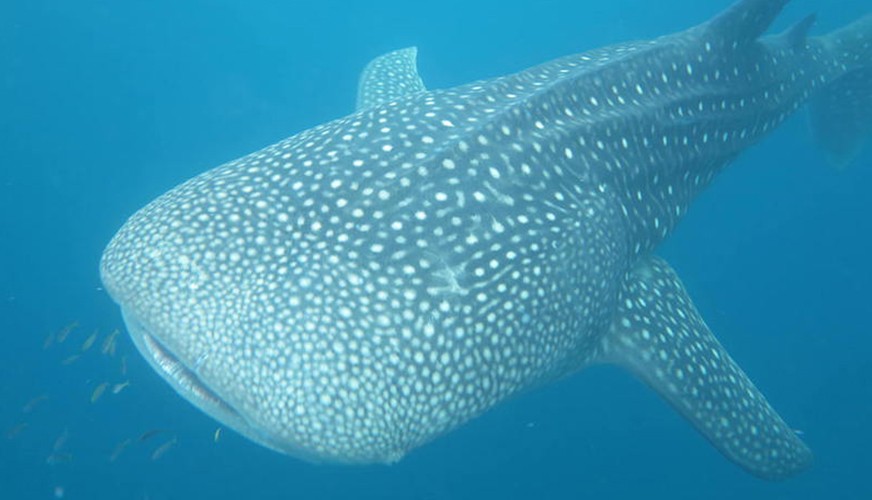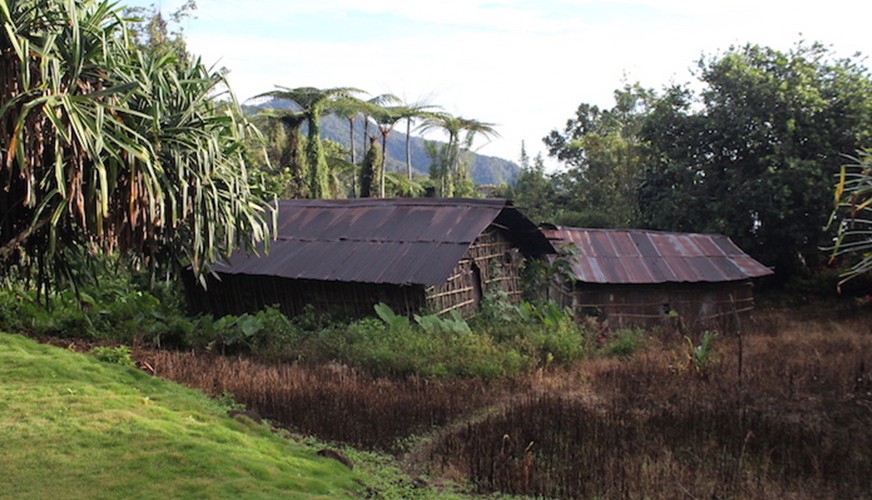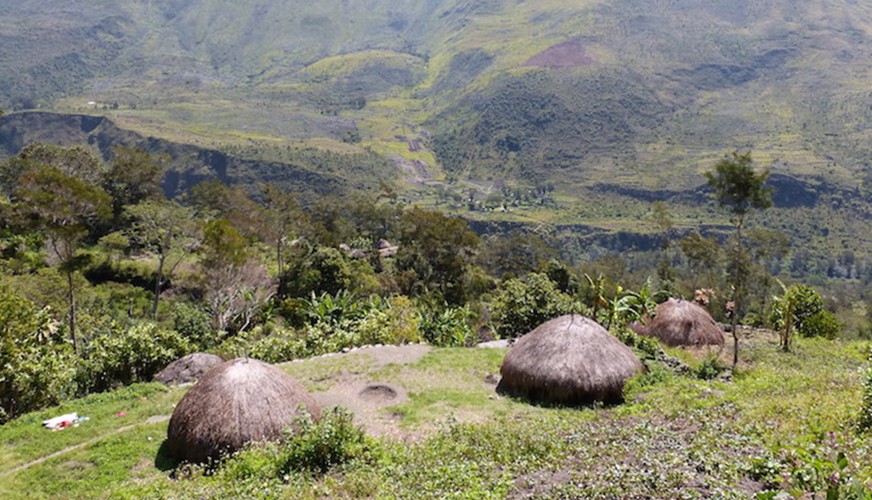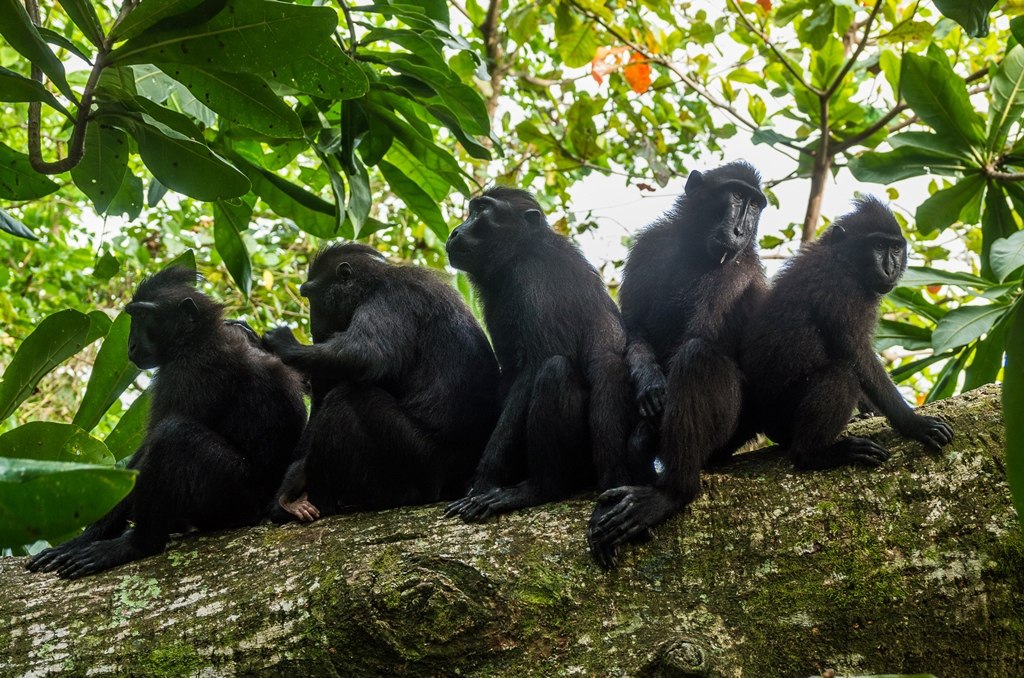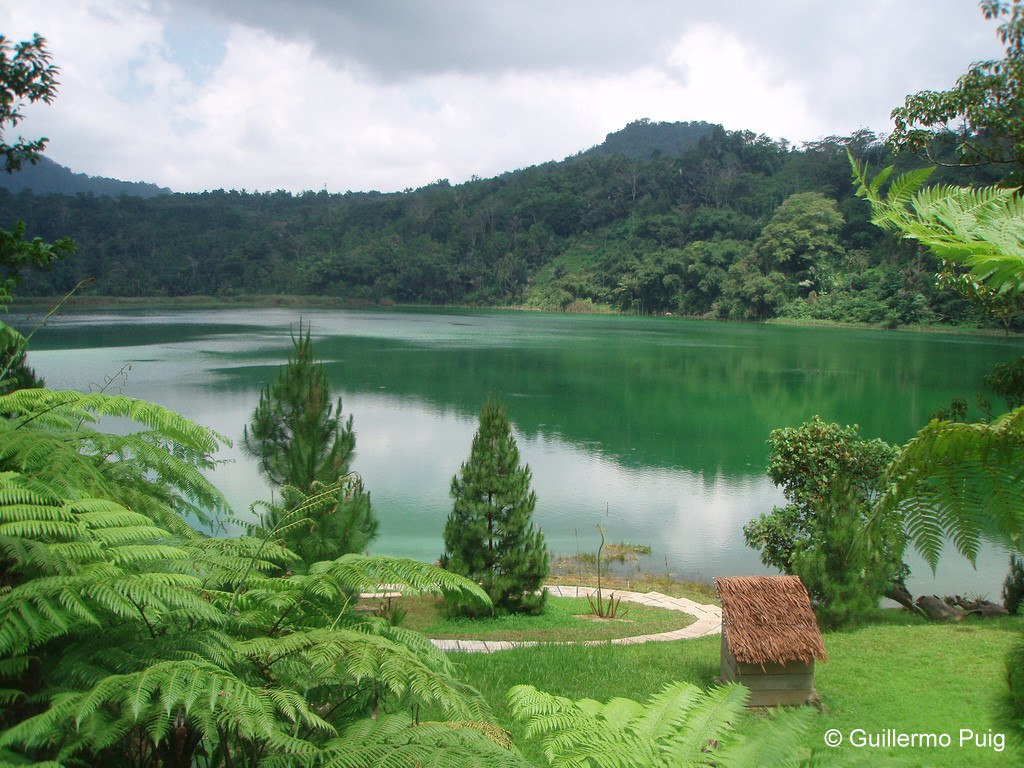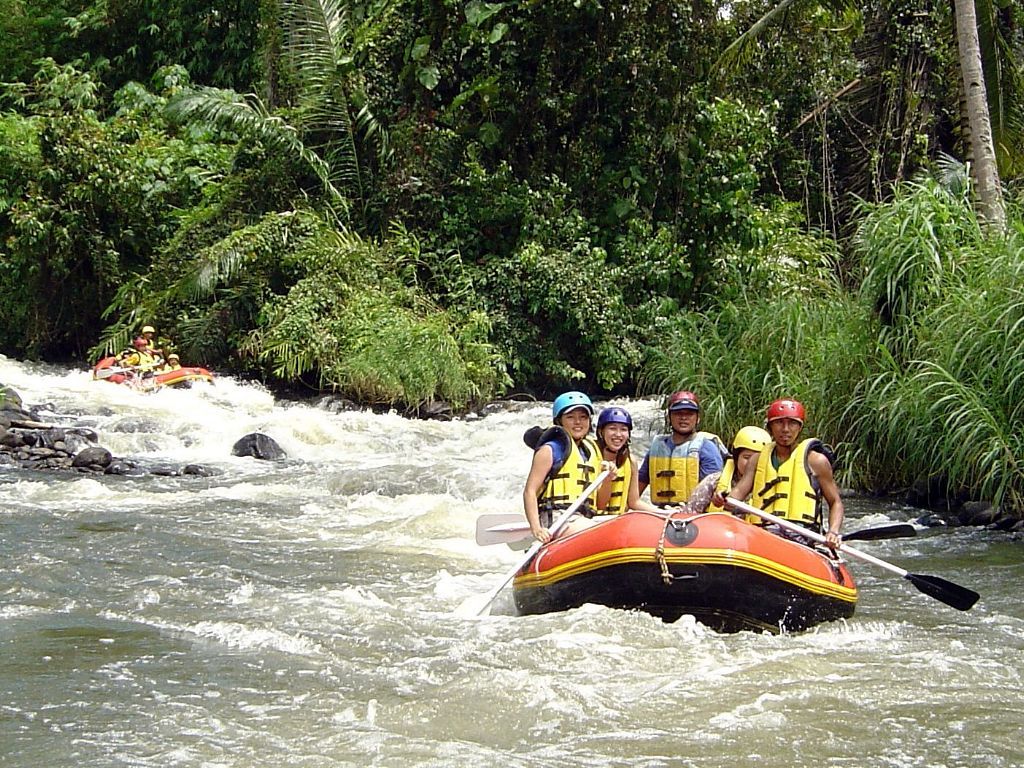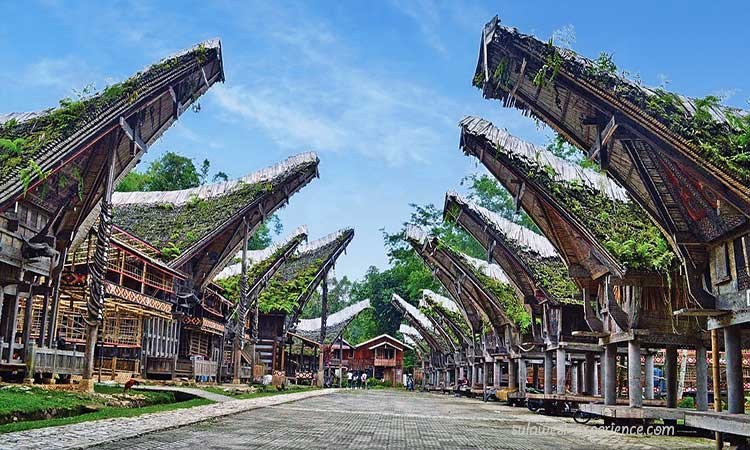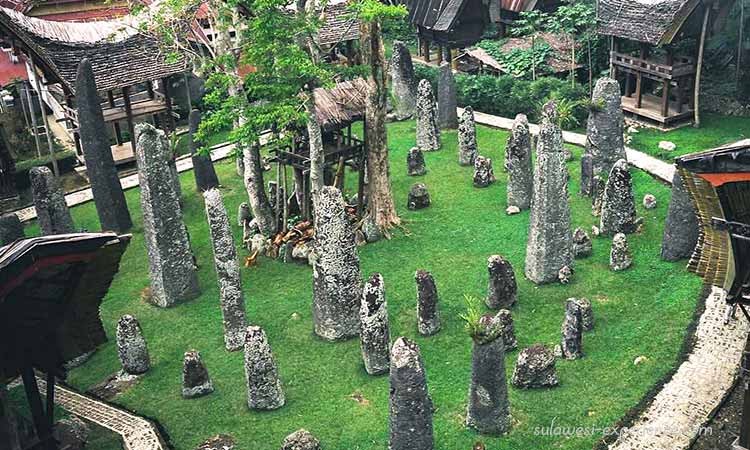Raja Ampat - Dampier Strait Homestays
- All Year - Best: October to April
- Courses
- Snorkeling
- Yoke Valve
- Diving
- 15+ Days
Raja Ampat – the epicenter of marine biodiversity. Stay in homestays scattered around the islands of Gam, Mansuar, Batanta, Arborek and Kri. We collaborate only with the best local dive centers – who can guide you safely. You will be staying in rather primitive bungalows – but you have the world! All the famous dive sites of the northern Dampier Strait are basically just in your eyeview: Chicken Reef, Sardine Reef, Cape Kri, Blue Magic, Mioscon, Mike’s Point and the list goes on. West Papua is the most bio diverse marine habitat on the planet! We recommend combining 2 homestays to cover a bigger area. (Please note that food & accommodation is fine, but very basic, and there are no menus to choose from).
Raja Ampat - Dampier Strait Homestays
All Year - Best: October to May
15 Days From € 2200 / Person
16 Dives From € 600
(Based on double occupancy)
(All Flights Included)
Raja Ampat – Dampier Strait Homestays
We collaborate only with the best local dive centers connected with homestays in Raja Ampat. The owners of the dive centers and their dive crew know what it means to execute good dive operations in Raja Ampat.
Situated off the northwestern tip of the Bird’s Head Peninsula on Papua, the most eastern island of the Indonesian Archipelago, Raja Ampat or literally meaning The Four Kings is an archipelago comprising over 1,500 small islands, cays, and shoals surrounding the four main islands of Waigeo, Batanta, Salawati and Misool.
The Dampier Strait is what made Raja Ampat famous amongst divers and nature lovers. The strait passes through the archipelago of Raja Ampat – between the two islands of Gam in the North and Batanta in the South.
The strait encompasses many smaller islands of which the most famous ones are Kri, Mansuar, Fam and Arborek.
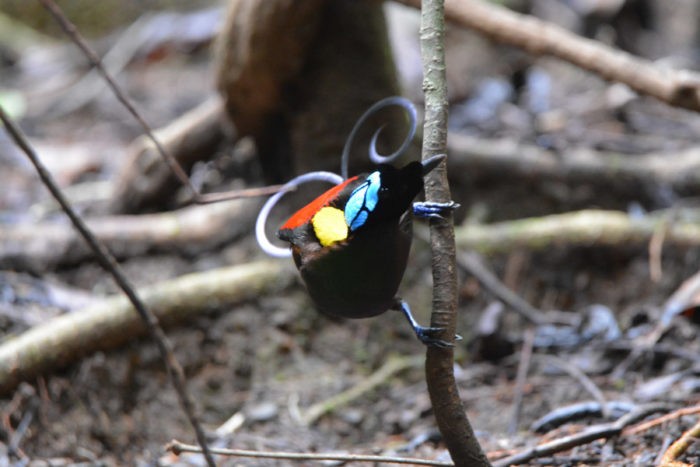
The Homestays
These are not homestays in the western sense, that is, you won’t be sharing a home but you will still be a guest of an Indonesian/Papuan family. Accommodation is provided on the family’s land in the type of housing typical of the area, and 3 meals a day are provided, making it a true cultural experience.
Our Raja Ampat family homestay option is a project that supports the community’s developing economy on their terms, and at a sustainable pace that meets their expectations. As part of this commitment, we are partnered with a number of local Homestays in the Raja Ampat Regency.
The homestays are simple – but lovely! In this case situated on the island of Gam and Mansuar. You have all the main dive sites within 5 – 30 minutes from your doorstep along with a very beautiful house reef and an amazing atmosphere from the pristine surroundings.
You stay in a rather primitive bungalow, but who needs more, when you have the ocean at your feet and the sharks just under the surface.
These trips with the homestays are the only trips we offer, where you can encounter a little bit of scarcity of food. There is always enough, but maybe there is not enough of what you exactly want. There are no menus to choose from.
Remember this is a real remote part of the world, and the family is not a resort. But the family do make awesome food.
Just set your expectations at a realistic level, and bring some snacks that you know will be good for you.
Breakfasts are usually very light. Sometimes it is only a light cake and some bananas. So if you need to fill up your stomach with heavy foods, better to bring some of your own provision.
The homestay will be friendly and help you, and if you do get hungry, you can always ask them to make a little extra.
Bathrooms are shared, and the shower is a bucket with non-heated water that you can pour over yourself. It is primitive, but if you can manage this lifestyle as an experience while you are here you will be in paradise.
From the homestay you can reach all of the Northern Dampier Strait dive sites of Raja Ampat such as famous Mike’s Point, Cape Kri, Mioskon, Chicken Reef, Sardine Reef, Blue Magic and many more.
You can join longer daytrips at extra fuel costs, to visit the viewpoint of Piaynemo, which boasts brilliant diving around it – like Melissa’s Garden.
Or visit the mangroves near the Passage. This is something you can arrange at the homestay during your stay and share the boat with additional people.
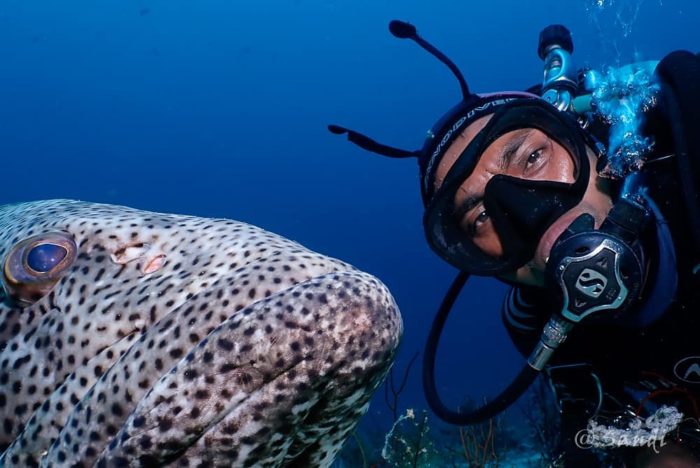
Raja Ampat & Surroundings
You will find the locals to be very friendly and helpful, and of course sometimes a bit shy. Always seek to be polite and respectful of the local people and their culture. Most of the people on the islands are Christian and you will be able to spot churches along the coastlines.
Naturewise, you will be submerged in between little islets of limestone cliffs, covered in lush jungle surrounded by fringing coral reefs. The wildlife above water is something to behold as well. You will find the endemic “Bird of Paradise” and cuscus hiding in the tree tops. Short junglewalks can be taken to observe these animals. This truly is one of the last Paradises on Earth.
You will for sure enjoy this part of the world. It will make you gently tune back in sync with nature.
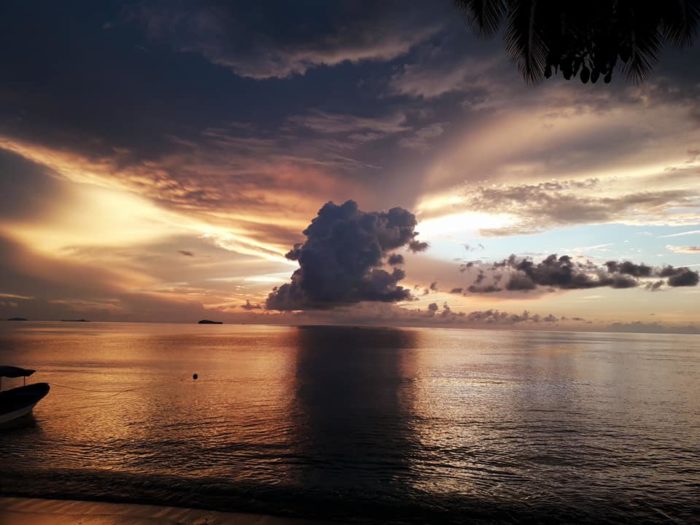
Raja Ampat – Diving
From your homestay on either Gam, Kri or Mansuar with an associated dive center, you can reach the most famous dive sites in less than 10-30 minutes. It is all right there. You dive the exact same sites as the best, expensive resorts. And remember that you do it, with a very experienced dive crew, that has years of experience from working in Raja Ampat.
Raja Ampat diving casts a spell on all who descend into its abundant waters – scientists, photographers, novice and lifetime divers alike. After breakfast you head out by dive boat for 2 dives and then you return for lunch. You have the option of participating in afternoon and night dives as well.
Lying in the heart of the Coral Triangle, Raja Ampat holds the prestigious title as the most marine bio-diverse place on earth – quite a title; but also a fact. At its most recent count the region of Raja Ampat was recognized to contain 1427 reef fishes, over 600 coral species (75% of the world’s coral species can be found here), not to mention the pelagic life that is abundant in the area.
Raja Ampat diving is breathtakingly spectacular, and truly unforgettable. Hard and soft corals compete for space on reefs that are bursting with life and colour. Swarms of small fish such as damsels, fusiliers and anthias mill about on the reef flats, while not too far away the large schools of tuna, trevally and mackerel congregate. Batfish, surgeonfish and barracuda aggregate around jettys and reef points, while angel and butterflyfish decorate both the reef flats and jagged coral towers that are home to abundant marine life.
Large fish species include napoleon wrasse, bumpheads and giant sweetlips, and being a shark sanctuary not a day goes by where divers don’t spot one of the many species of reef shark in the area. And of course, there are the manta rays: reef mantas at nearby cleaning stations, the majestic oceanic manta in open water, and during the right season any given dive site may yield magnificent mantas gliding by.
There are really no words to describe diving in Raja Ampat, it must be experienced and is truly unforgettable, and diving over 50 sites in the area we ensure all our guest visit all of the abundant highlights this region has to offer.
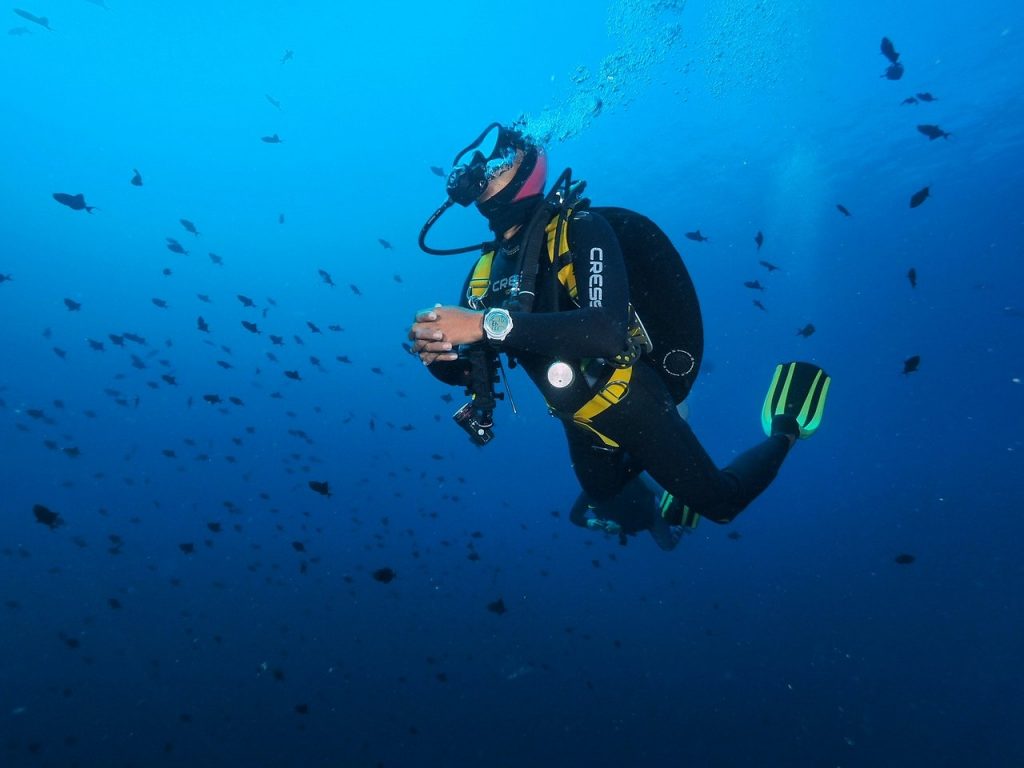
Currents
The waters of Raja Ampat are highly rich in nutrients, and the Dampier Strait (our location) is especially nutrient-rich due its fast moving currents. Nutrient rich water, and fast moving currents make the perfect environment for an abundance of marine life, including migrating mammals and pelagic species. However, such nutrient-rich water can mean low visibility at times (typically 15-20 m), and the majority of our dive sites will have current in varying degrees, from mild through to very strong, depending on the tides and moon. We recommend for you to bring your own reef hook, as these assist you during dives with stronger current.
Some dive sites are not suitable for beginners or anyone that doesn’t feel comfortable in currents. Our dive guides check the current direction and strength before the divers get in the water and change the dive plan or site if necessary.
We make the groups according to the level of experience. We ease all divers into the currents by starting the dives with sites that get mild currents. There are enough sites with mild current to complete a week of diving without going to the dive sites that get strong currents. However, you might also miss some of the highlights of Raja Ampat’s diving.
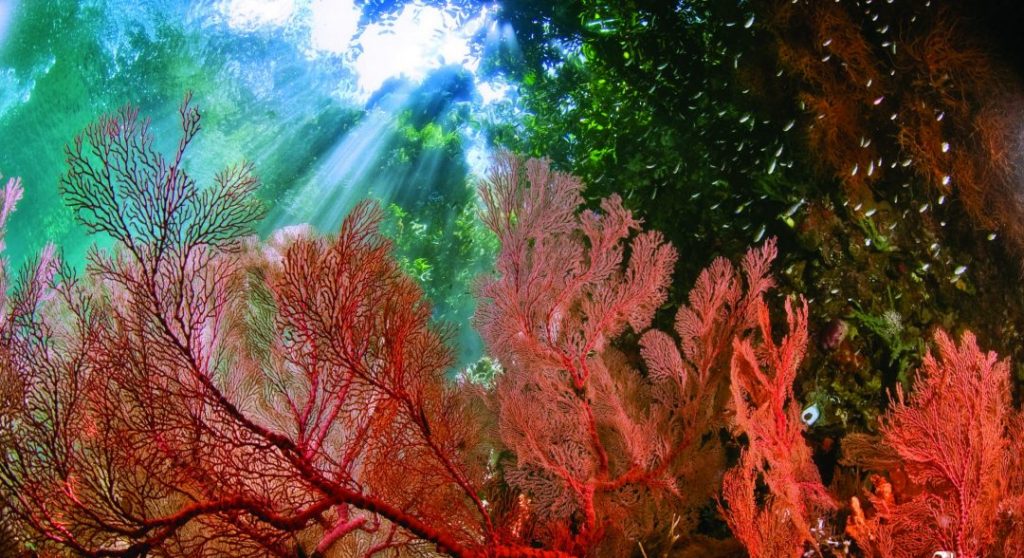
Dive Site Map
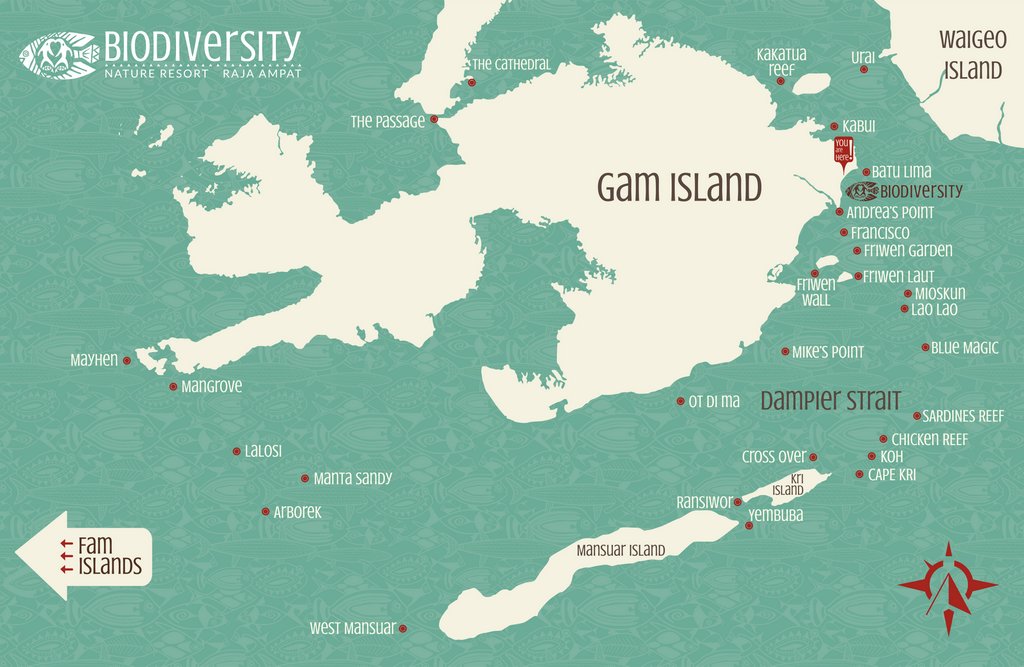
Favourite Dive Sites
Mioskun: Starting this relaxing dive should be done on the current side of the island, leaving a good distance between entry point and the best point of dive site on the south-eastern side. After you have marvelled at the sheer number of Yellowtail and Blue Lined Snappers, you can lazily drift around the eastern side of the island, until you reach the lee side. This site is well known as a likely opportunity to see Wobbegong Sharks. Make sure to peer under the coral ledges for these strange creatures, while also looking for tiny Pontohi Pygmy Seahorses on the coral rocks. The blue ring octopus can be spotted here on the rare occasion. An extremely popular site for the peacock mantis shrimp.

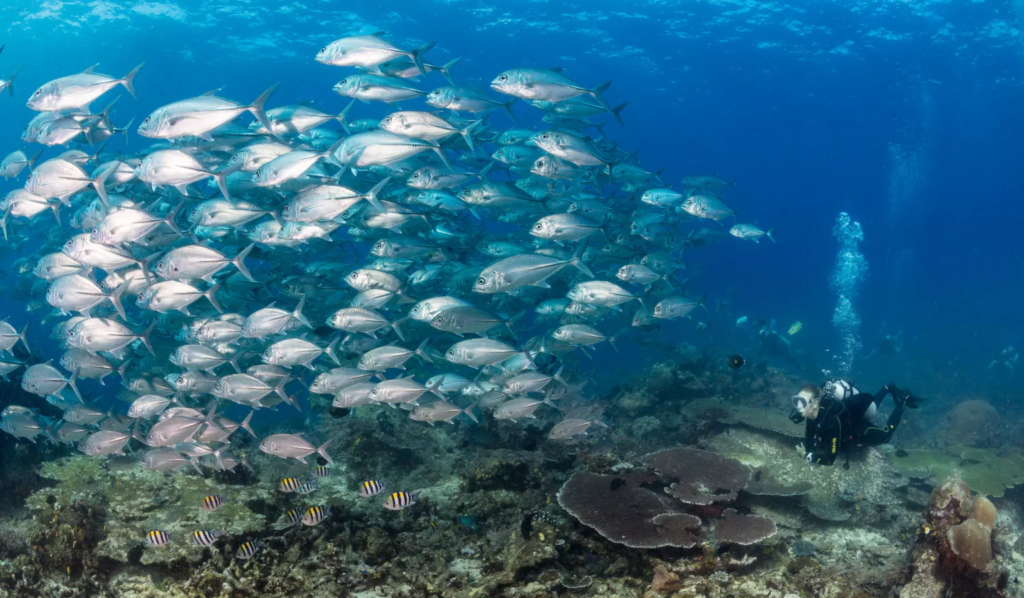
Lao Lao is a perfect multi-level dive site with a maximum depth of 25m. You will encounter Wobbegong sharks, schooling surgeons and snappers and giant moray ells are all known to be spotted here. You will slowly move to 18m , where you will find the Barracudas and oriental sweet lips swimming in schools after which the last stage of the dive will be at 9m. Here you will look amongst the coral for the Nudi Branches and keeping in mind, in season, that this is a great location for the Mantas to be spotted. The whole time throughout the dive keep an eye out into the blue for grey reef sharks and eagle rays, they love visiting this dive site
Mike’s Point looks like a Japanese warship from the air, the US Air Force repeatedly bombed the island during WWII. In the intervening years the reef has recovered remarkably, with the chunks of rocks being blown off, creating magnificent crevices and overhangs, for an array of macro subjects. Ascending on a great wall, there is usually a group of sweetlips smiling at the cameras. Since it sits almost smack in the middle of the Dampier Strait, one regularly spots hunting Spanish Mackerel, or cruising White Tip Reef and Black Tip Reef Sharks. As you spend the latter half of the dive in the shallows, be on the lookout for Wobbegong and Epaulette Sharks, Turtles, and even sea snakes. An obligatory dive site when visiting Raja Ampat.
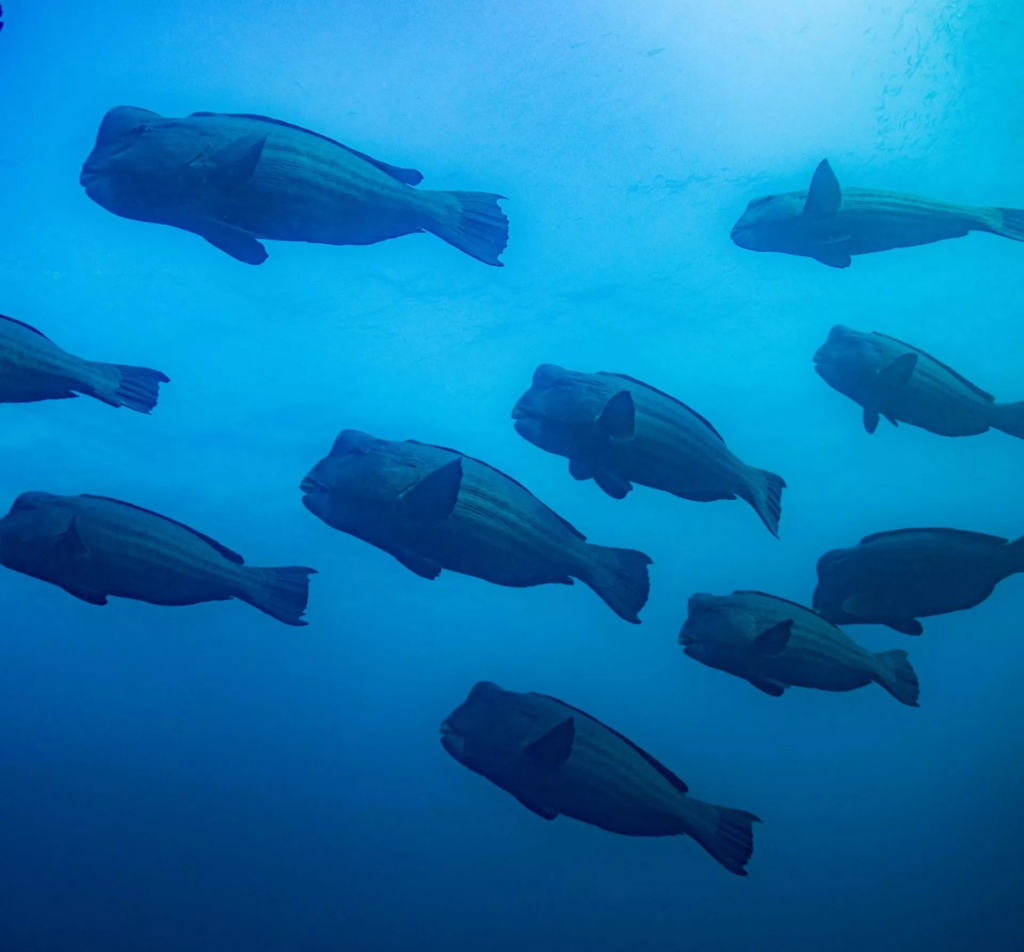
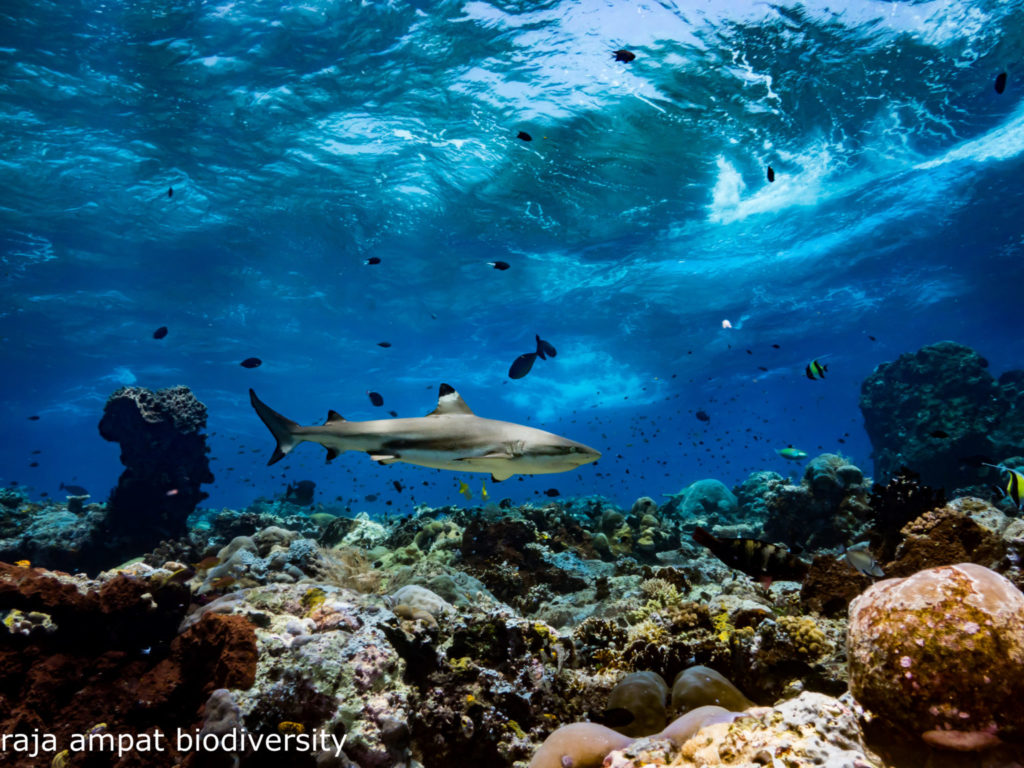
Sardine Reef is another premium dive site, not to be missed! An oval shaped reef patch, it sits right in the middle of some open ocean. Around the reef, you will be astounded by the sheer number of Fusiliers, Surgeonfish, Snappers, Damselfish and butterflyfish. All this living food attracts predators, such as Barracuda, Spanish Mackerel, Giant Trevallies and several types of Jacks. On occasion you might even find some Grey Reef Sharks cruising around. This is also a great site to spot some less common species, like Oceanic Triggerfish, Bump head Parrotfish, and Napoleon Wrasse. For the top of your list when visiting.
With its Indonesian name meaning Batu Lima “Five Rocks,” this is a perennial favourite, with many of our guests requesting one or more returns to this site. Descending on the north-eastern side takes you down to the maximum depth of around 24m. While following this slope you will be amazed at the scores of Fusiliers, Triggerfish, Unicorn Fish and Black Tip Reef Sharks frequenting this astonishing site. As you ascend at the end of your dive, you may encounter countless hunting Trevallies in the shallows, as we take you through the canyons that separate these rocks, always keeping an eye open for the multitude of Nudibranches and Flatworms that make their home among the vast array of colourful coral, on the sides of these rocks. An ever-changing dive, where nothing can be predicted. It should be at the top of your list.

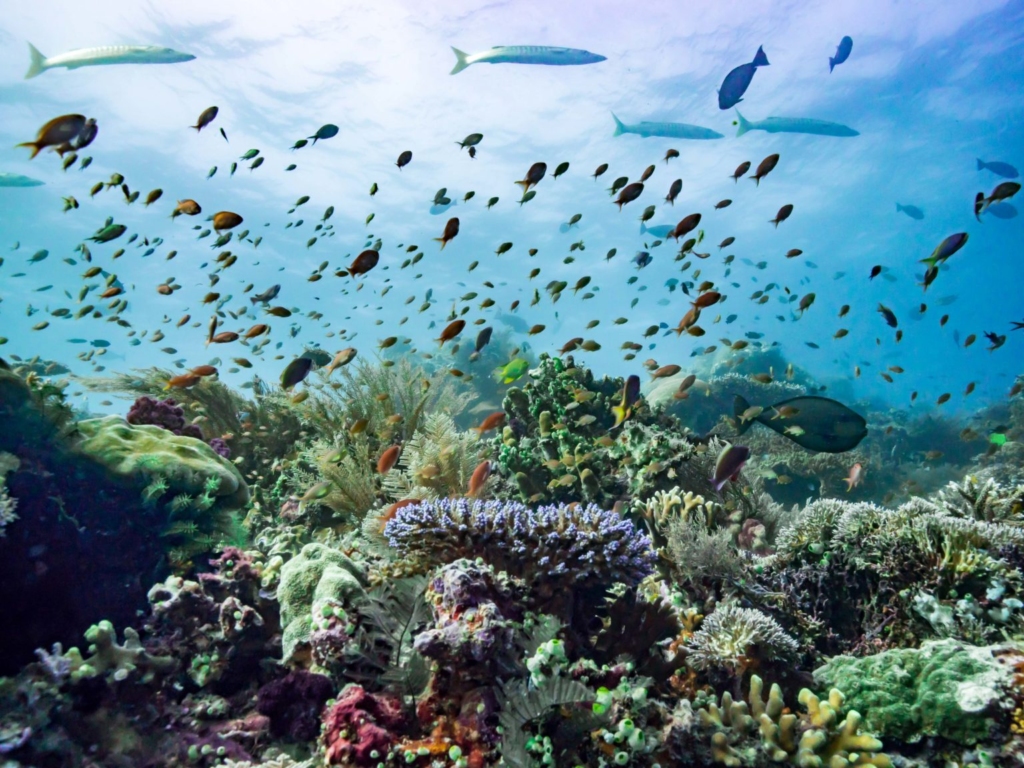
Yet another great dive site! Cape Kri is perhaps the most famous of all the dive sites in Raja Ampat, due to the record-breaking 283 species (and growing) recorded in a single 90min dive! The steep slope has absolutely everything on display – from vast gardens of colourful hard and soft corals, to the scintillating prospect of a Manta Ray flying by. The coral fields play host to an accent of colour, provided by swarms of Fusiliers, Damsels, Surgeons and Anthias. Dogtooth Tuna, Barracuda, Mackerel, Trevallies, as well as Grey Reef, Blacktip Reef and White Tip Reef Sharks are frequently seen patrolling the area. You might also be surprised by Bump head Parrots, Napoleon Wrasse and some very big groupers. This site is every bit the sensory overload, that will continue to mesmerize you, even after multiple dives, no visit would be complete without visiting here!
Sitting in the middle of the “blue” ocean, Blue Magic has the ever present anticipation of what is just beyond sight makes this site truly “magical”. Great schools of fish swarm around the mostly hard corals, relentlessly pursued by swarms of Spanish Mackerel, Giant Trevally, Barracuda, Dogtooth Tuna, Rainbow Runners, and countless Jacks. More often than not, divers are surprised by Blacktip Reef and Grey Reef Sharks, Bump head Parrots and even huge oceanic Mantas. This is the one site where anything can happen….and it usually does! Be ready for an amazing dive here!
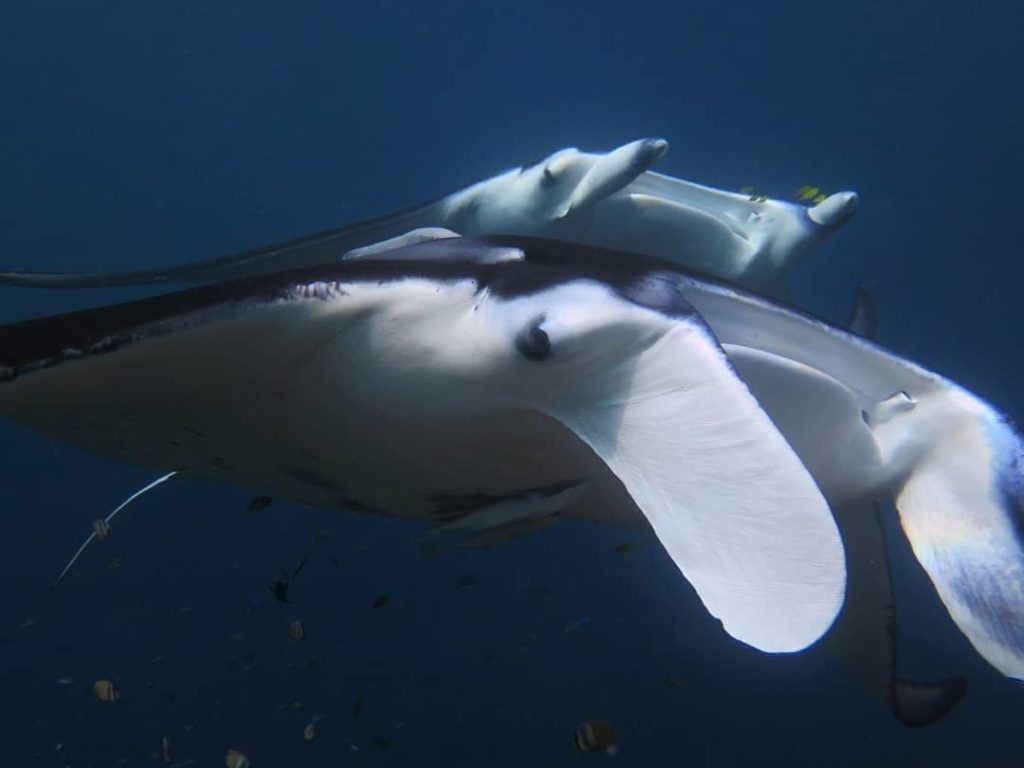

Chicken Reef is another shallow reef dive, however even with its similar topography to other sites, it delivers a vastly different set of species. Ever-present is large numbers of fusiliers and other colourful fish inhabiting the coral, but keep a look out for pipefish, pigmy seahorses, nudibranches, flatworms and some very interesting crabs and shrimps. You might also be rewarded with the sighting of Crocodile fish or Wobbegong Sharks
Otdima is a dynamic and fun dive site aptly named because of the different, unexpected currents that you get here. It is more of an atoll so the currents can be multiple; coming from different directions as a result there is lots of schooling fish, turtles and sharks the corals are diverse and pristine ecosystem. Currents are dependent on tidal movements so are unpredictable and can change; due to this we recommend you hold advanced or a minimum of 15-20 dives to dive this site.


Koh Island is a beautiful dive site with a sloping reef. It has a lot of interesting critters from the peacock mantis shrimp, lobsters and of course many hard corals of every species. As it sits just off cape kri there is a good possibility of seeing big schools of fish without all the current associated with kri , very enjoyable dive for all levels.
Sawandarek, Aborek and Yenbuba Jetty form part of the top three jetty’ s found in the Dampier Straight with the most biodiversity. They form part of the famous circuit called the “three jetty Raja Ampat tour “. We are lucky to have them as dive sites we visit already. They would be obligatory dive sites to visit if you wish to have the best overall experience with a wide variety of choice!
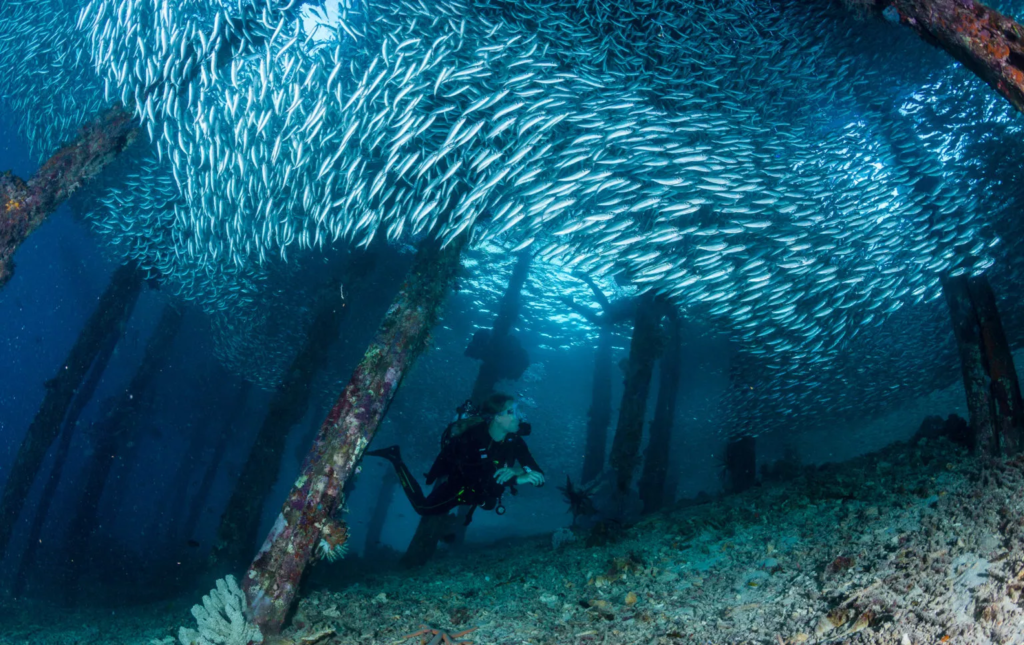
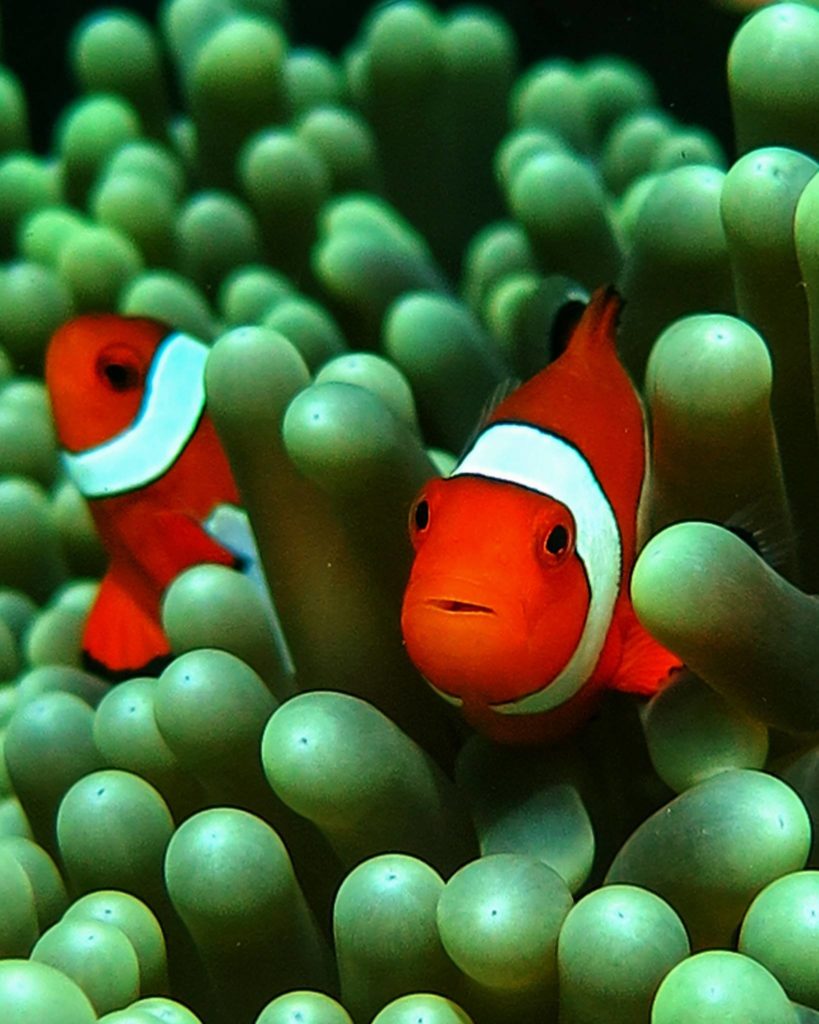
Friwen Wall is a unique dive site in that it is one of the very few wall dives that the Dampier Straight has to offer. The start of the wall has two small caves where you can spot fish swimming upside down, a strange thing to see for the first time. The wall is covered in gorgonian fan corals, sponge corals and whip tail coral right from the bottom of the wall to the surface. It is the perfect wall for keen photographers who love marco. If you are lucky you are able to see Mantas and Eagle rays swimming past the wall.
Saporkren is one for the best muck dives in the area. Here you will find the common sea horse, 3 different types of clown fish, pipe fish, Octopus and the flamboyant cuttlefish. You start the dive by descending to 18m and snake your way up towards the Saporkren jetty. You will come across lots of rubble and sandy areas where it takes a little time to get used to. Keep a look out for the smaller things the ocean has to offer. For photographers it is a “must do dive” if you have a macro lens.
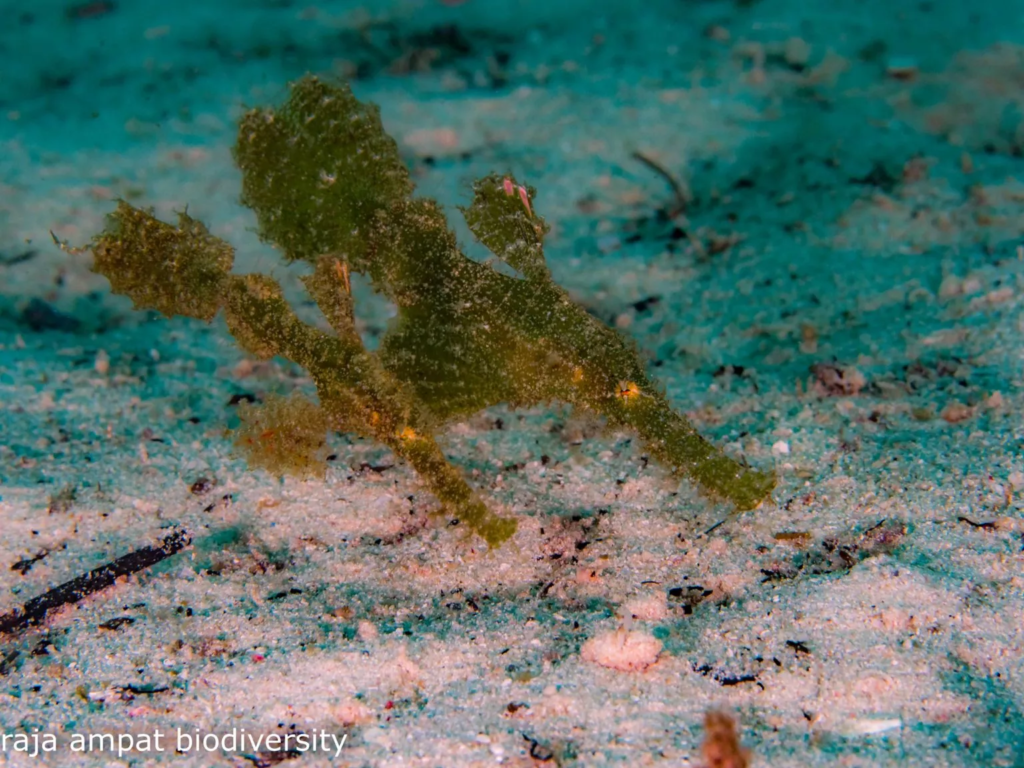

Magroves / West Gam is a fantastic dive site, with many schooling fish of giant barracuda and sharks galore. The top of the reef sits at 5 meters and drops to 25 meters, stretching into the shallow mangrove area. It is a unique site because the mangroves offer protection for juvenile fish of all species, encouraging an abundance of marine life to flourish and contribute to the diversity seen everywhere. The mangroves can be explored on the high tide only, so best option here would be snorkelling, due to the shallow depths, I must do if you want something complete different and exciting to add to your dive logbook!
Mayhem reef is a wonderful dive site that offers a wide range of corals. As you descend the sloping reef you will find a few large bommies surrounded by glassfish, with lots of small over hangs, offering many places for wobbegons and sting rays to hide. It is home to many species of fusiliers, waiting on the North or East side of the reef, where they feed of the nutrients brough in by the currents. In turn this brings the larger pelagic’s (Giant travellys, Dog Tooth Tuna, Grey reef sharks). Along with a wide range of macro, it is not uncommon to encounter 2 different species of pigmi sea horse. As well as many different Nudi Branches.


Just around the corner from yenbuba is; West Mansuar its a challenging and deeper dive, but the rewards are justified, most of the dive is done between 25 and 18 meters (the deep part) so we must watch our bottom time closely. The marine life is abundant with larger schools of fish, barracuda, sharks and sweetlips to name a few (the current part). The corals are also very healthy and range from soft to hard corals with fish cleaning stations along the way. Due to the difficulty of this dive we recommend divers have advanced open water and at least 30 dives with experience in currents.
Manta Ridge is one of the best locations for spending your dive in 6m of water while Oceanic & Reef Mantas swim around you. As the currents can be strong here you use reef hooks to stay in the same spot. You will also encounter several sharks and bump head parrot fish on your way to the hook up area. You can often see yellow pilot fish swimming with the Mantas, as they swim over cleaning stations in a hover like motion. If the Mantas are not around then the dive can be just as breathtaking as you drift along the ridge and up onto the top flats where numerous different species can be seen. This is a seasonal dive location as Mantas arrive from October-April yearly
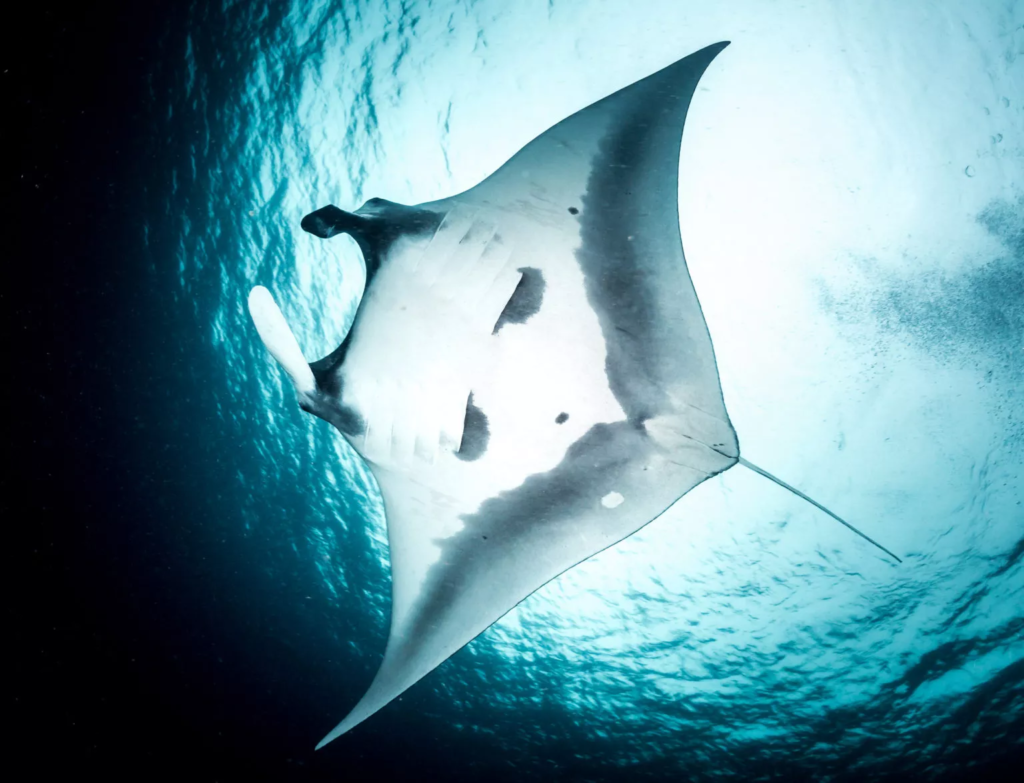

Manta Sandy: Between the months of October and April, great numbers of Manta Rays congregate in the shallow, plankton rich waters to feed. At this dive site you will have the opportunity to see these graceful beauties pause for a while to get groomed and cleaned. On a good day it might seem like the runway of a busy airport, as up to 20 Mantas have been spotted. Be aware that Mantas love current, and the stronger the better! We strictly adhere to waiting behind a defined line of coral rubble, so as not to disturb these gentle giants. This is, without a doubt, one of the most memorable Raja Ampat dive sites. If you come in high season, please don’t miss it, it has to be added to the house reef!
Melissa’s Garden has to be one of the top 10 dive sights in the world. This sight is truly amazing with what it has to offer. We start the dive in 20-25m where you will be on the sandy edge of the reef looking for the larger schools of fish (surgeons, parrots) and keeping an eye out for the Grey Reef Sharks. As we move our way up the reef you will start to encounter the amazing diversity of coral and fish life that this reef has to offer. As you get closer to the top of the reef you will find that the corals fight with each other for space, making it one of the most spectacular garden reefs. No visit to Raja Ampat will be complete without visiting this dive site!
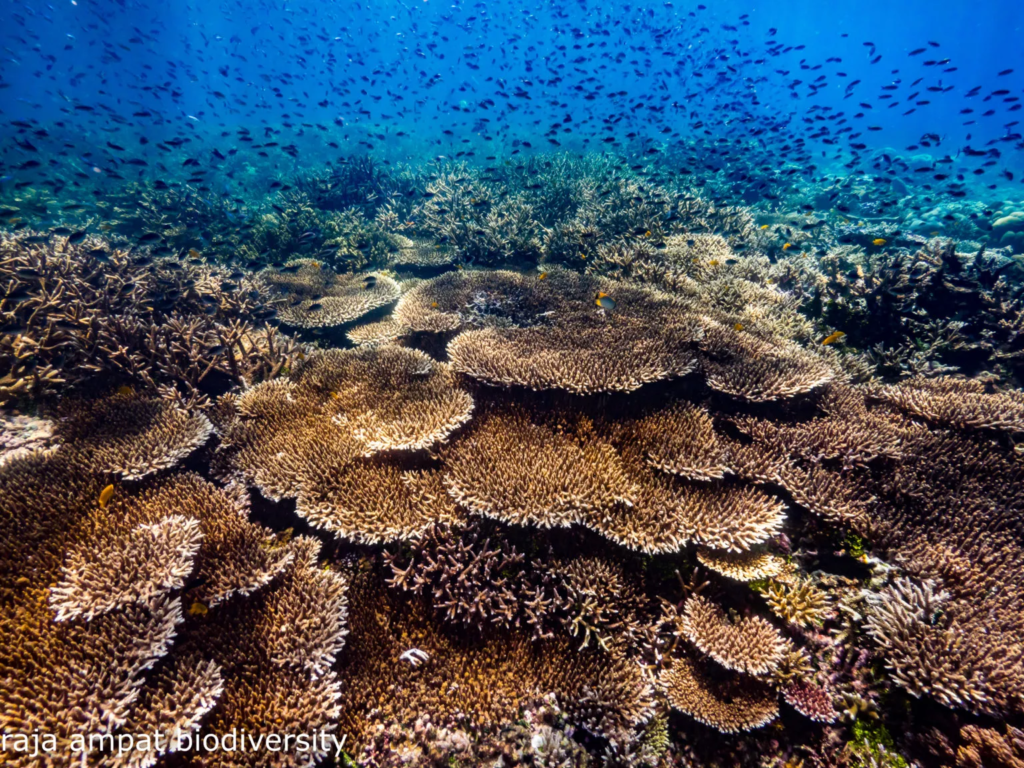

Fam Slope dive site has one of the steepest slopes and in some areas a wall dive. The main attraction for this dive site is the gorgonian coral that can be found here. You will be swept along with the current searching for macro life, like the Frogsfish and the many Nudi Branches of different species. This dive has many secrets, you just need to spend the time observing the reef while drifting by. It is a fantastic drift dive.
Season
General consensus is that the best time to dive Raja Ampat are the months of October to April when there is less rain and the seas are at their calmest. This being said, Raja Ampat really doesn’t have an off season. Diving is available here all year. And outside of the “Manta Season” other factors come into play – for example visibility and crowds. Mantas are prevailing mostly between December – March, when the waters have the most nutrients.
One thing to consider if you are thinking about travelling to Raja Ampat in the rainier months of June – September is the wind. The seas can get choppier at this time of year and those who suffer with sea sickness might want to book another time.
The months of August and September will give you the best visibility ranging from 20 to 30 meters, which means less nutrients in the water and therefore encounters with mantas are more rare – but this is a perfect time for photographers due to the visibility that will allow you to capture all the big schools of fish, because they are not affected by the lack of nutrients in the water!
Spend your surface intervals on pristine beaches or in remote villages, sipping your tea or coffee, while relaxing and gathering energy for the 2nd dive. If you want to do a 3rd or even a 4th dive you can add this on the same day.
The distance to the dive sites range between 5-30 minutes. Most likely an average of 10-15 minutes, so those are pretty short and lovely rides. The water temperature is normally around 27-28 degrees but colder upwellings can sometimes make the temperature drop to 24 degrees. A wet suit of 3 mm in thickness is the standard, but it does not hurt to bring a 5 mm if you have, but it surely is not a must.
Included
Included
- International Flights
- Domestic flights to & from Sorong / West Papua (20 kg’s checked baggage included)
- Airport pick-up by private car (Denpasar, Manado or Jakarta International Airports)
- 2 nights in a 4* hotel w/ breakfast
- Airport pick-up in private car (Sorong Airport)
- Boat transfer between Waisai to & from the homestays
- 10 nights in homestay w/ full board and free mineral water + hot water for tea and coffee)
- It is recommended to pre-book the dives in order to secure a space on the dive boat.
- *Fee to Rejsegarantifonden
- Full package tour – See the benefits of being covered by the Full Package Act and Regulations here
*A Danish Travel Guarantee Fund covering all European citizens in case of bankruptcy: link
Not Included
- “Visa On Arrival” ~ €30
- *Raja Ampat Marine Park Fee ~ €40
- Dive Package
- **Ferry ticket between Sorong / Waisai ~ €8 x 2
- Tips for the staff
- Airport departure tax ~ €10
- Personal Travel Insurances
- Anything not listed in “Included”
*All divers and non divers visiting Raja Ampat are required by the regional government to pay an annual entrance fee for the Marine Park
**Easily bought at departure on the way. Tickets cannot be pre-booked and the ferry is never full
A Domestic Flight or Along the Way:
North Sulawesi
The Lembeh Strait
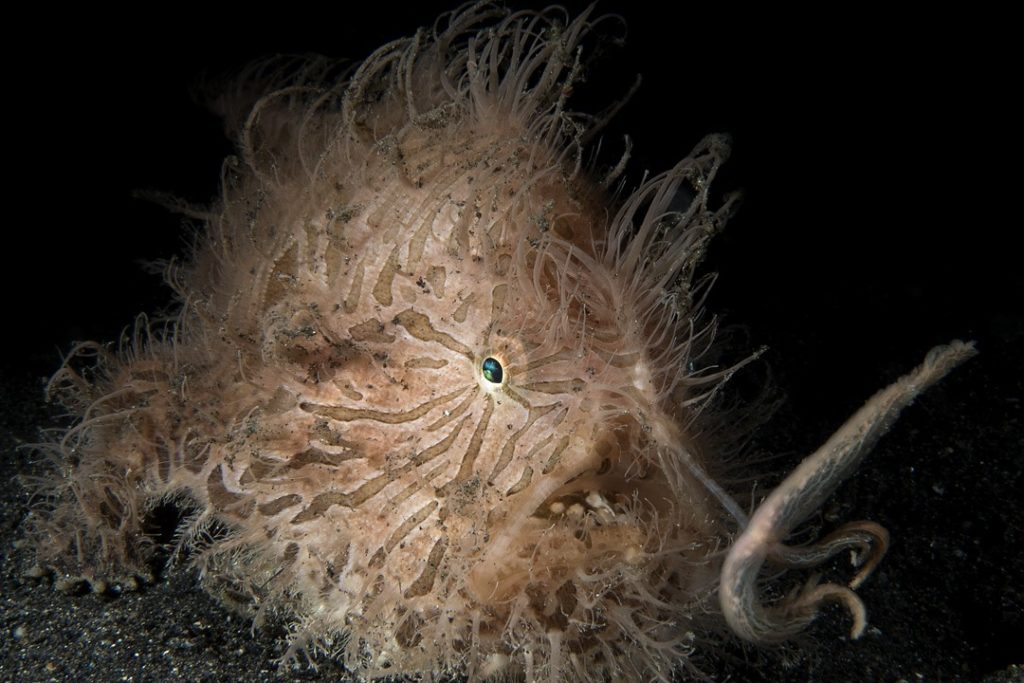
Muck diving capital of the world. Life has evolved without the ordinary reef fish. Could be along the way via Manado.
North Sulawesi
Pulau Bangka
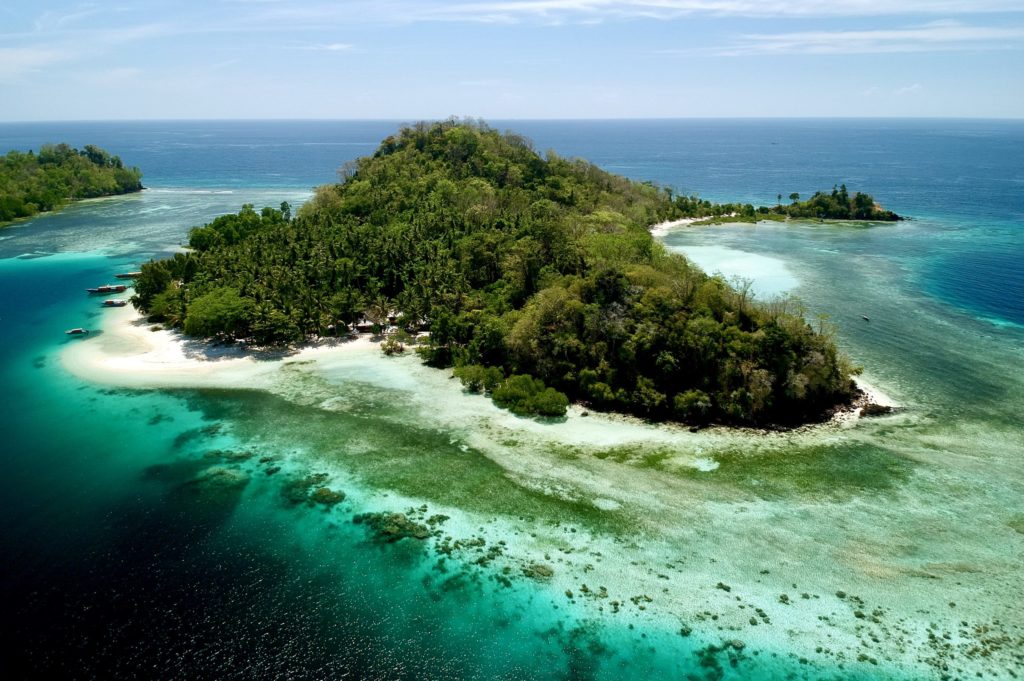
Bounty island, surrounded by soft coral color explosions and pinnacles. Could be along the way via Manado.
North Sulawesi
Pulau Bunaken

World-class walls full of turtles, exciting drifts, reef sharks and napoleon wrasses. Could be along the way via Manado.
Wakatobi
Wakatobi Resort
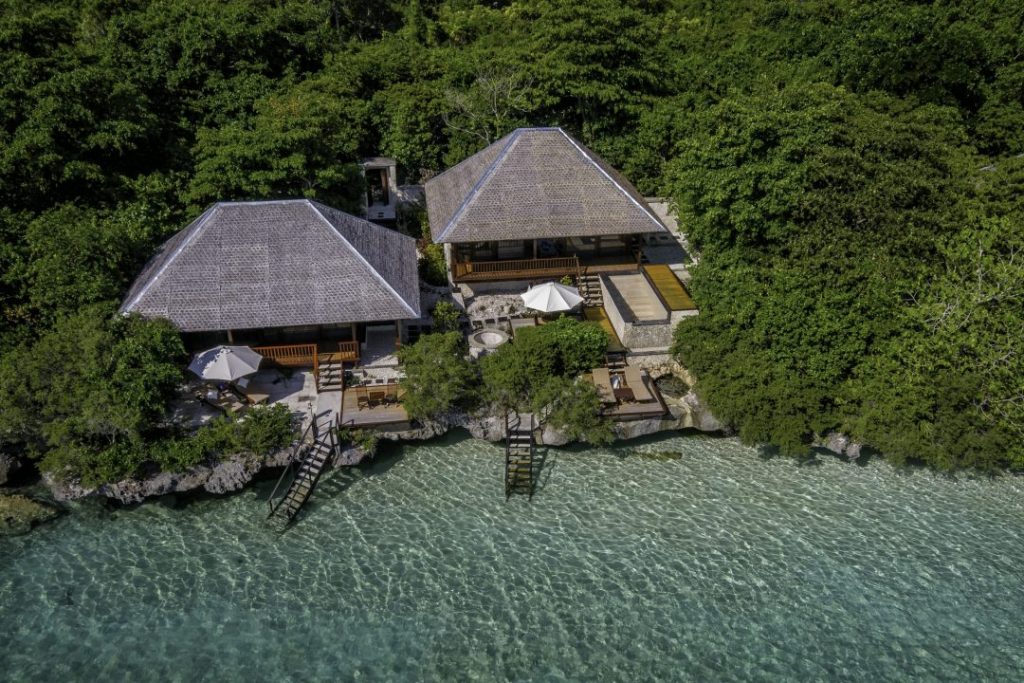
Deemed the World’s Best Housereef together with luxury in an island paradise. Needs an extra domestic flight only.
South Sulawesi
Pulau Selayar
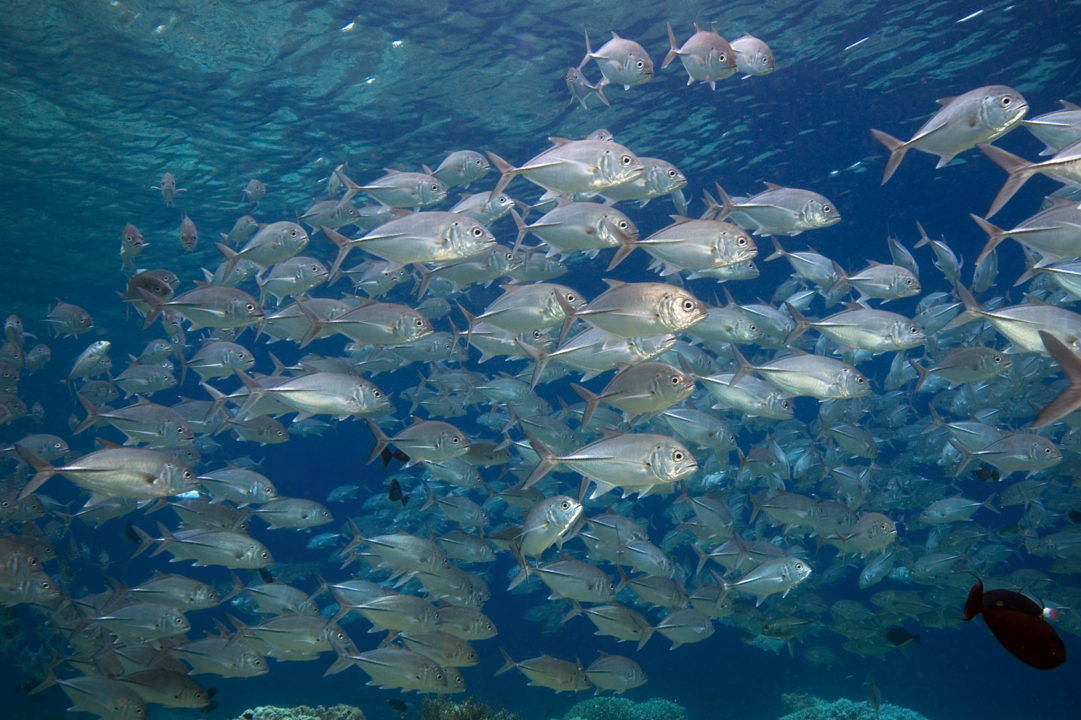
With some of Indonesia’s best reefs and one of the best housereefs found anywhere! Could be along the way via Makassar.
Central Sulawesi
Tompotika
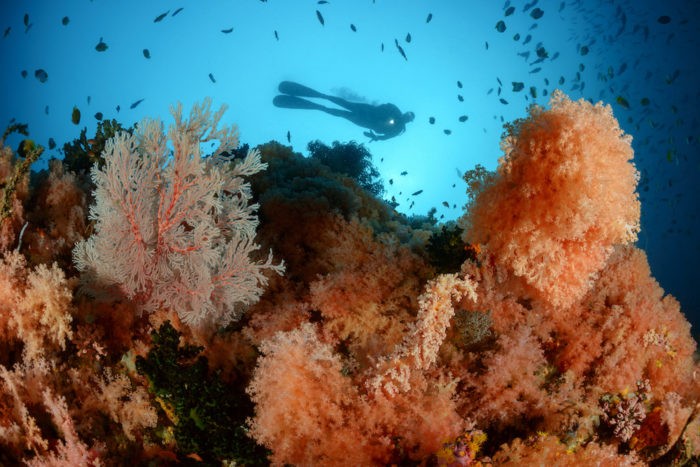
Ridges, canyons and valleys with complex topography. Giant corals and schools of fish. Needs a short domestic flight via Manado.
Via Sorong / West Papua:
Sorong Airport is on the way to Raja Ampat and often overlooked by travellers. Sorong Regency and the area beyond offers many adventures into the rainforests of Papua where you will find nature and jungle at its best!
We will take you to look for the Lesser Bird of Paradise, King Bird of Paradise and 12-Wired Bird of Paradise. Also you have the chance to see the cassowaries.
If you are interested to explore the rainforests in Sorong Regency the closest site is about 1.5 hours drive by a four wheel jeep from Sorong and a 1.5 hours trek through low-land forest to the base camp. You need to be fit for this trip.
You will need an extra domestic flight from Sorong with a short stopover in Manokwari to reach Nabire. So we recommend to add even more days in West Papua once you are finally there.
Did you know that Papua is one of the few places in the world where you can easily see and swim with whale sharks? These majestic, endangered animals can grow up to 12 meters! It is a special experience to get to swim with these rare, enormous creatures that are known to be very gentle and docile. This is one of Papua’s most exclusive trips!
The mass presence of whale sharks on the coast of Papua can be explained by the activity of fishermen. Over the years, fishermen and whale sharks have gained a mutually beneficial relationship as the sharks are attracted by the fish that escape from the nets or are rejected by the fishermen. On the other hand, the whale sharks offer protection to the fishermen by keeping other predators away. During this tour you will stay with a friendly local Papuan family, giving you a good chance to see the local life style upclose!
We are well-aware that whale sharks are currently listed as a vulnerable species. They are continued to be hunted in other parts of Asia, even though it is now strictly illegal under the international law. In Cenderawasih bay, besides the fishermen, the local people have now also a chance to benefit from the tourism related to seeing these beautiful animals. We actively monitor the safety and professionalism of the swimming activities when we visit them.
If you are an adventurer passionated about nature and wildlife expeditions then this challenging trekking tour into Arfak Mountain of Papua is ideal for you. You will explore the wonderful wildlife that hides in the thick jungle of Papua, including several species of the Birds of Paradise and Tree-kangaroos.
This part of the Arfak Mountains in Papua is untouched by modern development and therefore, very pure and special in its own. Only one small village lies high in these imposing, mountains. It’s surroundings hide a great variety of wildlife which is unique to the world. The terrains are still very untouched so no roads lead to this part of the Arfak Mountains. Therefore, the challenging and thrilling trek to your basic base camp is the only way to get there. You need to have a good physical condition for this tour.
Birds of Paradise and more
- Magnificent Bird of Paradise Playground: 5 minutes walk from village
- Western Parrotia Playground: 1.5 hours walk from village
- Lesser Bird of Paradise Tree Performance: 30 minutes walk from village
- Flame Bowerbird Nest: 1.5 hours from village. 30 minutes from Wester Parrotia
- Bowerbird Nest: 2 hours walk from village
- The Black and Brown Sicklebill: Near Bowerbird’s nest
- Magnificent Riflebird and the Superb Bird of Paradise have been heard.
2 domestic flights to reach this remote part of West Papua!
Be ready to go back in time and walk through the ancient world of the Dani tribes during this trekking tour in the southern part of the Baliem Valley. You go back to the roots of Papua and challenge yourself to meet the most beautiful people in the most fascinating environment.
In 1938 the area of Baliem Valley and its people were discovered and the original Dani and Lani tribes inhabit this beautiful valley still today. This 5 days trekking tour through the southern Baliem Valley offers great and interesting trekking routes and an unforgettable adventure to your soul. A good physical condition is required for this tour. You pass mountainous and isolated area where you will meet friendly tribes that still live according to their own, traditional ways. Although the people have started to wear western clothing, their habits and way of living has not changed much in the last decades. There are no road systems between the villages so to walk is the only option to move around the valley. We take you back to the roots of Papua in a fascinating and pure environment.
Via Manado / North Sulawesi:
Easy to read, only 2 hours drive from Manado. Located at the foot of Dua Saudara Mountain, the Tangkoko Nature Reserve is comprised of rolling hills and valleys with a variety of hardwood trees and unusual plant life. The animal life is also quite varied, and one can often view Tarsius tarsier (one of the smallest known primates), black tailless monkeys, snakes, spiders and kuskus (marsupials). Tangkoko Batuangus Reserve offers a suitable protective environment to help prevent these animals from becoming extinct.
Only one hour away from Tangkoko Nature Reserve (on the way) is Tasikoki Wildlife Rescue and Education Centre (www.tasikoki.org). Here you can observe many unique species from Indonesia, as well as several endemic to Sulawesi. All animals have been rescued from the illegal wildlife trade. When taking a tour of the centre (1.5 hours) you will learn about conservation of wildlife and nature as well as the rampant wildlife trade. After visiting the animals you can enjoy a vegetarian meal (with fish) together with the staff as well as the many volunteers from all over the world.
Price: $45/person as add-on only to a Tangkoko Nature Reserve trip.
Visit the Vihara Buddhayana (Buddhist Temple) near Gardenia Country Inn, then heading for the small village of Woloan, where you can see the Minahasan Style Houses being built, knock down style, ready for delivery or shipping. Then continue to the base of Mount Mahawu where we begin the 1-hour trek to the crater’s edge. From that vantage point we can see Bunaken & Manado Tua Islands, as well as the bay of Manado. At the bottom of the crater, one can observe a steaming lake and experience the smell of sulfur from the pools.
Then it’s off to see the traditional food & flower market in Tomohon, surprises in store for you!
You will have lunch at Tondano Lake, close to the goldfish farm, where you will enjoy the serenity of the lake. Then we travel to Pulutan Village, a cottage industry for making pottery or choose the Toraget Hot Springs. At the weaving factories you can observe the local weaving traditions being practiced. Last stop is Lake Linow (the changing color lake), a one of a kind experience.
Gorontalo can be reached by a 1 hour flight from Manado or an 9 hour scenic drive. You would be surprised by what Gorontalo has to offer in its forests with its endemic fauna as well as the unique diving of the Togian Islands.
Nantu Forest is located in the heart of the Wallacea region in Gorontalo Province. Wallacea is the wildlife transition zone between Asia and Australia named after its founder, Alfred Russel Wallace (1823-1913), a famous British biologist, naturalist, and anthropologist.
A community of approximately 30,000 people live within the Nantu and Paguyaman river watershed and is completely dependent on these rivers for its water supply. Nantu’s carbon content is invaluable. Nantu Forest is famous because it is the only place in the world to reliably see its other endemic inhabitants: the Babyrousa celebensis.
The remarkable “prehistoric” appearance of these mammals is largely due to the prominent upwards incurving canine tusks of the males, which actually pierce the flesh in the snout.
One of the most spectacular and thrilling adventure tours in North Sulawesi. The most popular rafting route is on the Nimanga River in Timbukar-Sonder. The grade of the rapids is level 3. You will be picked up at your hotel at 9:00 AM and driven to the village of Sonder (about 1.5 hours from the center of Manado) located in the Minahasan highlands.
Your journey down the 9 km long river will take about one and a half to two hours through scenic forests with a coffee break including traditional cookies. Don’t be shy to scream along the rapids because at the end you will scream for more. Every raft can hold up to six persons including an experienced guide.
After this wet and wild experience, it’s back down the mountain with a lunch stop in a local restaurant. You will arrive at your hotel or the city of Manado (approximately 1.5 hour ride) at approximately 3:00 to 4:00 PM.
Combine Landtours of South Sulawesi
On the southern point of Sulawesi Island, Bira’s nearest access point is through its capital, Makassar. South Sulawesi hosts some of the most beautiful beaches in Indonesia. The accommodation is located on one, and if you rent a motorbike and follow the coast north you will find a number of white, untouched beaches, caves and small islands.
Sulawesi is the largest island of the Wallacea region and hosts at least seven species of macaques that are endemic to the island, some of them occasionally paying a visit to our camp.
Bira is home of the Konjo tribe and the heart of maritime culture in Indonesia. The Birians have been sailors for as long as history has been recorded. To this day, shipbuilding and sailing remain the central focus of daily life and identity. About 70 percent of the population in Bira and surrounding villages make a living through work related to boatbuilding and navigation.
Diving Bira you will meet turtles, moray eels and quite a variety of small critters such as mantis shrimp, anemone shrimps, scorpion fish, a variety of nudibranches and much more. Pelagic species are trevallies hunting on the reefs. Other pelagics that are sometimes seen around Bira are thresher sharks, bull sharks, tiger sharks, hammerheads, tunas, barracudas, giant marble rays, manta rays, sunfish / mola mola and even whale sharks at the right time of the year. July to October seems to be having the most of these pelagic encounters – this is also when the water temperature drops a bit.Scuba Diving in Bira is done from April to November.
- Best diving conditions to witness pelagic life including bigger sharks, mola mola and manta will be in late summer when the water gets colder. This happens from July onwards to October. But of course no guarantees can be made on behalf of nature.
Day 01 : Makassar Arrival – Toraja (LD).
Meeting service at Sultan Hasanuddin Airport Makassar, then directly trip to Tana Toraja. The trip will pass some regencies in distance of 310 km (it’s about 8 – 9 hour drive from Makassar). On the way you’ll enjoy the beautiful rice field, fish pool and the Traditional Houses of Bugisnese which is adorn on the right and left side of the main road. Lunch will be at Pare-pare, one of the regencies we passing by in the distance of 175 km. After lunch the trip will be continue and will arrive in Tana Toraja about late noon, then check-in to hotel, dinner at the local restaurant, free program.
Day 02 : Toraja Tour – Batutumonga (BLD).
After breakfast at Hotel, check out then visiting Traditional weaving village at Sa’dan, traditional Toraja village with buffalo horns in front of their houses in Palawa then start trekking to Batutumonga its magnificent and fascinating mountain, rice terrace, coffee and cacao plantation, and green trees surrounding will give the trip more impressive one. By chance, you will meet the local people doing their activities in traditional way. Lunch will be served en-route with simple style. Afternoon arrive in Batutumonga, check-in at Guest house / Homestay, dinner and overnight at Batutumonga.
Day 03 : Batutumonga – Pana – Sariale Trekking (BLD).
Simple breakfast at Guest house or Homestay, check out, process to Pana Village for start the trekking in the country side through traditional farm, Torajan villages etc .. on foot. Lunch will be served en-route with simple style. During trekking you will find a beautiful landscape, paddy field, traditional Toraja houses, local people daily live and more. Upon arrive at Sariale Village, pick up then transfer to hotel for check in. Dinner at the local restaurant.
Day 04 : Toraja Fullday Tour (BLD).
Buffet breakfast at hotel, starting Toraja tour to visit The cliff-side stone grave with wooden effigies on the balcony at Lemo, the royal family tombs at Suaya, Ke’te Kesu (traditional wooden carving village and hanging grave), then lunch at local restaurant. After lunch continue the tour to visit Londa (the natural cave grave) and Marante (is a village where a lot of Tongkonan House, big paddy barns and big rocky hill containing hanging stone graves which the located called “Erong”). Afternoon back to the hotel, Dinner at the local restaurant, free program.
Day 05 : Toraja Fullday Tour (BLD).
Buffet breakfast at hotel, starting tour to visit Pallawa (The most beautiful village with buffalo horns in front off their houses), Kambira (Baby grave) then lunch at the local restaurant after that continue the tour to visit Lokomata (the boulder grave) then visit Sa’ dan To’Barana, the traditional cotton weaving village. Afternoon back to the hotel, Dinner at the local restaurant, free program.
Day 06 : Toraja – Makassar Departure (BL).
Buffet breakfast at hotel, check out then leaving to Sultan Hasanuddin Airport Makassar. The trip will be take about 8 – 9 hour drive. Lunch will be served at the local restaurant in Pare-pare, afternoon arrival at Sultan Hasanuddin Airport for flight back to home or others destination. End program.
Day 01 : Makassar Arrival – Toraja (LD).
Meeting service at Sultan Hasanuddin Airport Makassar, then directly trip to Tana Toraja. The trip will pass some regencies in distance of 310 km (it’s about 8 – 9 hour drive from Makassar). On the way you’ll enjoy the beautiful rice field, fish pool and the Traditional Houses of Bugisnese which is adorn on the right and left side of the main road. Lunch will be at Pare-pare, one of the regencies we passing by in the distance of 175 km. After lunch the trip will be continue and will arrive in Tana Toraja about late noon, then check-in to hotel, dinner at the local restaurant, free program.
Day 02 : Toraja Fullday Tour (BLD).
Buffet breakfast at hotel, starting Toraja tour to visit Kete’ Kesu (traditional wooden carving village and hanging grave), Marante (is a village where a lot of Tongkonan House, big paddy barns and big rocky hill containing hanging stone graves which the located called “Erong”), Bori menhir stones, soared up several meters above the land and then lunch at local restaurant, after wards continue tour to visit Pallawa (The most beautiful village with buffalo horns in front of their houses) and Lokomata (the boulder grave) then visit Sa’dan To’Barana, the traditional cotton weaving village. Afternoon back to the hotel, dinner at the local restaurant, free program.
Day 03 : Toraja Fullday Tour (BLD).
Buffet breakfast at hotel, starting Toraja tour to visit Londa (the natural cave grave), Lemo The cliff-side stone grave with wooden effigies on the balcony, the royal family tombs at Suaya then lunch at local restaurant. Afterwards continue tour to visit Kambira (Baby grave) and Sangalla, village lying among the leafy bamboo trees and the tomb of King Sangalla. Afternoon back to the hotel, dinner at the local restaurant, free program.
Day 04 : Toraja – Makassar Departure (BL).
Buffet breakfast at hotel, check out than leaving to Sultan Hasanuddin Airport Makassar. On the way we will stop to visit the Jesus statue, which is known as one of the highest statues in World, than continue trip back to Makassar. Lunch will be served at the local restaurant in Pare-pare, afternoon arrival at Hasanuddin airport for your flight to the next destination.
Q & A
Yes beginners can dive here and even take beginner courses.
However, to make the most and best of your journey, we do recommend people to have at least some diving experience. Especially drift dives. Buoyancy control should be good = neutral buoyancy. Not only to have an easier dive, but also not to harm marine life and corals by kicking them.
After all this is said, yes, beginners can dive here. But keep the above in mind.
Mantas are in highest numbers between December to March, when the water is the most nutrient rich. However, you can see them a couple of months on either side of the season – as this is the wild.
Great! We can offer you courses from entry level to technical dives.
Contact us for further details.
The prices for PADI OPEN WATER courses roughly start at €285 and takes 3-4 days.
The 3 day course will let you study via e-learning before you get here, which is smart if you want to be better prepared and spend your holiday time diving and relaxing instead of studying.
The 4 day course is the most popular and you start your studying once you get here.
The prices are almost identical.
Please book courses at the time of booking the whole trip.
We highly recommend booking most of the dives in order to save a space for you on the dive boats.
You will most likely be able to join the dive boats on the days where you haven’t booked anything, but to be certain of having a space, you should pre-book. It is up to you if you will see how you feel when you get there.
The dive centers can take costumers in from surrounding homestays, so just because you stay at the homestay, doesn’t guarantee you a space.
The same goes for dive courses – you should book those in advance when you make your booking with Pilgrim Adventure.
Don’t expect to find cupboards or wardrobes, though your room may have some simple shelving. If you want to ensure that you can hang things up, then it is suggested that you pack a line to travel with.
There is no provision for secure luggage storage in any of the homestays, so either leave your valuables at home or you may prefer to keep them with you.
Loss through theft is not heard of in the homestays and the highest risk posed is by unscrupulous other travellers.
If an ensuite bathroom is a luxury that you cannot live without, then ensure that you book the “VIP” homestay experience. If you do not, then expect to share the toilet and bathroom facilities with other guests. They are usually housed in timber-framed palm-thatched huts which have floors of sand, timber, crushed limestone or occasionally concrete.
Bathing is almost always achieved by bucket and ladle in a style of bathrooms referred to as “dip mandi” bathrooms. Very few homestays have real showers, but many have piped fresh water to replenish the large container from which you bath. Waste water, however, is not plumbed but channelled away to seep into the ground. It is for this reason you are asked to only use environmentally safe, biodegradable soaps and shampoos.
One note regarding bathing water is that it is predominantly fresh ground water, but on some of the smaller islands the water is brackish due to the proximity to the ocean. If you do not enjoy bathing in slightly salty water, then
it is best that you avoid these islands.
Toilet facilities are either western pedestal or squat style toilets that are flushed by hand using a bucket and ladle. The toilets are connected to septic tanks and toilet paper is usually provided. Due to the remote location of many homestays the toilet paper supply may be low, so it is suggested that you have some with you if you can’t go without it.
You will spend most surface intervals on some tropical piece of paradise. The boats can easily reach small villages and jetties for a comfortable surface interval. Usually the boats won’t return between the two morning dives.
The dive centers have all the dive equipment you will need. To see the rental prices see the individual accommodation menus.
Of course it is nice to bring your own dive gear if you can.
As a minimum we would recommend to bring your own dive mask – for a good fit of course and best possible comfort under water. Bring a reef hook if you can.
All dive places in Indonesia use the “International” Yoke connection for the regulators 1st stage.
If you have a DIN 1st stage you can buy a DIN to Intl. Yoke converter – which might come in handy every time you dive in South East Asia anyway!
You would have to go all the way to Waisai, which is a 40-90 minutes away by boat.
This is another good reason to prepay the dive packages.
If you pay for your dives at the dive center, the dive centers accept Indonesian Rupiah in cash at no extra charge. They accept Euros and US Dollars in cash with a 3% charge.
Raja Ampat Dive Center has a credit card machine and can take online bank transfers for 3% extra. Guests usually use TransferWise to transfer the money, which are easy and convenient. The dive centers also ask 3% extra for those transactions, and recommend that you set up your TransferWise account and do a test transfer of a very small sum while you are still in your home country in order to avoid any identity verification issues while making the transfer in Raja Ampat.
Again, it is much easier to book and pay the dives ahead of time.
Soul Scuba Divers do not have a card machine yet, but they accept cash, Paypal and Transferwise – the same charges apply as mentioned above.
Internet Access: The only internet connection available out in the islands is via Telkomsel’s cell phone service as above, but connections are unreliable and speeds vary widely, depending on tower location, network load and weather conditions.
Internet capable devices will work over the cell phone network (signal strength and connection plan permitting). Free WiFi is available at many cafes and hotels in Sorong and Waisai, but is extremely rare out in the islands.
SIMS are available almost everywhere in Indonesia. Airports, convenience stores, roadside stalls and any place that sells phones or accessories all have them. They are available in Waisai too. If you can not find them being sold at shops at the airport, then just ask your taxi driver. The vendor of the SIM can usually register it for you.
Here’s a link to Telkomsel’s FAQ page for its Flash network packet service. (Page loads in Bahasa Indonesia but can be switched to English.)
Telephone: For a remote archipelago of scattered islands, Raja Ampat has fairly good mobile phone coverage.
Telkomsel is currently the only network provider in Raja Ampat, so if you want to use the mobile network without roaming charges, you’ll need a Telkomsel SIM for your phone. Telkomsel markets a variety of SIMs, but the most common prepaid ones are branded SIMPATI and HALO. HALO is data only. Signal strength is excellent in the areas around Sorong and Waisai. As a general rule, if you’re near a village you should be able to receive some kind of signal, but there are wide areas with no coverage at all.
Cell phone towers in Raja Ampat regularly go offline. Sometimes service will be restored in an hour or two, sometimes it can take weeks or even months. There’s one tower that we know of on Gam that hasn’t worked in over two years!
If 24/7 guaranteed telephone and internet connectivity in all areas is a must for you, then your only option is to travel with a satellite phone.
Electricity: Electricity supply grids don’t exist outside Sorong and Waisai. Accommodation places and villages with an electrical supply have their own generators.
As elsewhere in Indonesia, electricity is 220-240Volt 50Hertz, using type C (CEE 7/16&17 Euro 2 pin) and F (CEE 7/4 “Schuko”) plugs and sockets.
You’ll need an adaptor if your devices don’t have one of these plug styles, and a step-down transformer if your devices will only handle a 110-120V US style supply.
Electricity in Raja Ampat’s island villages and at homestays is supplied by generator and in many places is only available from sunset until around midnight to conserve fuel. Some homestays have backup solar lighting available.
Charging batteries and mobile devices: If you’re staying in a village or at a homestay with a generator, you’ll be able to charge batteries and equipment at night while the generator is running. If you’re at accommodation without a suitable power source you’ll need to arrange an evening visit to the nearest village or ask your host to take your equipment for charging and return the next morning.
There is a hospital in Waisai that can provide first aid, but for anything serious you would probably need to go to Sorong. Especially if urgently requiring treatment on a weekend.
Rumah Sakit Angkatan Laut naval hospital does not provide western standard facilities, but operates a 24 hour emergency care facility and is probably the best option for initial treatment of serious illness or injury.
Despite what some sources (and many local people) will tell you, malaria is present in the islands.
That said though, the risk at homestays on Mansuar, Kri, Gam and Arborek is relatively low due to the absence of large numbers of human carriers and (in most place we’ve stayed at) surprisingly low mosquito populations.
Although malaria transmission rates are currently low in the Raja Ampat islands, wearing repellant and appropriate clothing to avoid bites is a must and anti-malarial medications are recommended.
Doxycycline is often recommended as a good antimalarial and has the advantage of also providing protection against certain other bacterial infections, but you should definitely consult a professional for current recommendations before making a decision about malaria prophylaxis.
Insect bites: There are a lot of insects in Raja Ampat that can give irritating bites, but sand flies are the worst in our opinion. They are virtually invisible, exceedingly tiny, black flies that are common in many beachside locations. They most commonly attack at dusk, usually (but not always) on your lower legs and arms. The bites take several hours to appear, are incredibly itchy, and last for days. Because of the delayed reaction, many guests wake up at night and assume they’ve been bitten by bedbugs. We’ve never known of a single proven infestation of bedbugs in homestay accommodation. It’s much more likely that sandflies were the culprits. It’s good practice to liberally apply an insect repellant late in the afternoon after your last swim!
Gastrointestinal diseases: We’ve been lucky and have never contracted any, but again make sure you have some rehydration salts and basic medicines on hand. (Consult your doctor regarding appropriate medicines before you go.) Anti-diarrhoea medicines like Imodium are best taken only if you have to travel – they only treat symptoms, not causes. Drinking only boiled or otherwise purified water will greatly reduce your chances of stomach troubles. You can read more about drinking water here.
Skin and wound infections: You should clean and treat even small wounds immediately with an antiseptic, and then examine them regularly for signs of infection. Especially if they are coral scrapes, which are notorious for going septic. Keeping wounds dry until healed is also good practice, but it’s a big ask when you’re on a short stay in the islands. Fungal infections love a tropical environment too, so you might want to consider having some antifungal medicine in your first aid kit.
Ear infections: Spending a lot of time with water in your ears in the tropics raises the risk of ear infections, so if you’re concerned pack an appropriate medicine.
Japanese Encephalitis and Dengue Fever: These mosquito-borne diseases have been reported from Raja Ampat. You might want to consider vaccination for Japanese Encephalitis. Avoiding mosquito bites is the only protection available against Dengue Fever.
Tropical diseases: All tropical environments harbour parasites and pathogens not found elsewhere. You’re extremely unlikely to come into contact with any of those during a short holiday in Raja Ampat, but if you suffer any persistent or recurrent symptoms that can’t be diagnosed or aren’t relieved by standard medical treatment – even if those symptoms appear months after your visit – you should consult a tropical diseases specialist.
See our “About” page to know more about prevention of moscuito bites.
For further reading on health: https://www.iamat.org/country/indonesia














